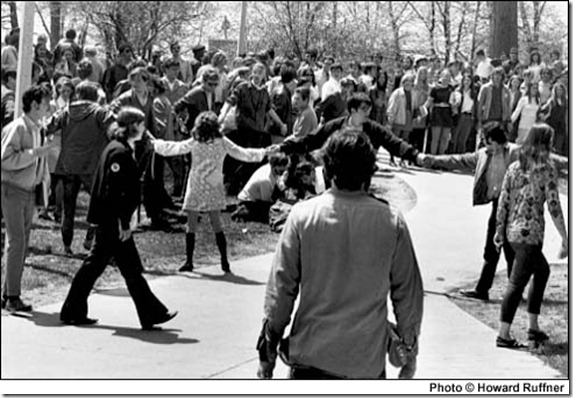Posts Tagged speed
Culture War, Class War book released. Occupy Generations and The Rise and Fall of “Obvious Truths.” now available. Order Information
Posted by sillymickel in activism, allegory, authenticity, being yourself, Class, Culture, economics, Generations, globalrevolution, History, individualism, nonconform, occupywallstreet, Politics, psychology, spirituality, US on November 2, 2013
Culture War, Class War released.
3rd Book by Michael Adzema now available –
Culture War, Class War: Occupy Generations and the Rise and Fall of “Obvious Truths.” Order Information.
Culture War, Class War, the third book – of the four being published in October-November, 2013 – is now completed also.
This book can be ordered now.
Click below to order.
http://www.amazon.com/Culture-War-Class-Generations-Obvious/dp/1492864021
OCCUPY GENERATIONS. THE RISE AND FALL OF “OBVIOUS TRUTHS”
- What is the American Awakening?
- How have Americans become so dumb, so that they have so often voted against their self-interest? Or did they?
- What exactly are the Millennial Generation, Generation X, Yuppies, Boomers, the Fifties-Eisenhower, and the World War Two Generations? What do the drugs they use have to do with the events and the America they have helped to shape?
- Everyone knows what happened in America in 1963 and 1980 that changed its direction. But what happened in 1971 that did the same thing, and much more profoundly? How is it continuing today? And why do you not know about this?
- Has there ever really been a conservative backlash in America? Were Yuppies former hippies? Did Boomers become conservative as they became older?
- What of Occupy Wall Street, Arab Spring, the Tea Party, and the Wisconsin union movements?
- What is the Matrix? What are the things you know to be obviously true that are not? And why is it you think that way?
- Why is there now, suddenly, hope for America and the world?
Class War is disguised as Culture War. The 1% foment Culture War among the 99% to distract and cover their real economic motives.
This book looks into why America’s “privileged class” — its “royalty,” “blue bloods” — started a “culture war” against the middle class, working class, the poor … and the educated, artists, and humanists in the early 1970s. We discover how their fear of Sixties activism panicked them into an all-out assault against elements that threatened their wealth and privilege in all institutions of American society — media, education, medicine, government, politics, publication, religion, especially higher education — and restructured them for their ends.
Culture War, Class War—Occupy Generations and The Rise and Fall of “Obvious Truths” is about how that reversal and restructuring happened and what has transpired in the last fifty years to bring us to this crisis. We see how Americans’ minds, personalities, beliefs, and their daily lives were orchestrated to a tune not theirs any more, but one that was sweet and harmonious to the profit-takers.
We see how this culture war, class war continues today: blatantly so in the Tea Party movement, the Republican Party, the Wall Street giveaways at the expense of jobs, tax cuts for the “filthy rich” and corporations, budget battles and cuts in government services and entitlement programs, rampant anti-environmentalism, and anti-minority, anti-immigrant laws and attacks.
Finally, we behold a worldwide global awakening. As the strains of war and financial oppression increase to a point no longer bearable, the American mind reawakens, beholds the obvious lies that have created the matrix of their lives, and sees more clearly….
About the Author
Michael Adzema is a writer, activist, teacher, and psychotherapist. In addition to Culture War, Class War, he has authored the books, Apocalypse Emergency; Primal Renaissance; Apocalypse NO; Experience Is Divinity, and Falls from Grace, which is listed as a reference on prenatal and perinatal psychology. In the last decade he authored and managed the popular blogs and websites, Culture War, Class War; Apocalypse No; and Things That Want to Be Said, among others. In the early Eighties, working as an anti-nuke activist with Oregon Fair Share, he was one of a small group of people whose actions led to the lawsuit that ended nuclear plant construction in the United States. He was the editor of Primal Renaissance, a professional journal of primal psychology, and was the first person in the United States to teach prenatal and perinatal psychology at the university level, which he did at Sonoma State University in the early Nineties. Culture War, Class War: Occupy Generations and the Rise and Fall of “Obvious Truths” is the first volume in Michael Adzema’s Return to Grace series of ten volumes, of which four are currently in print and six more scheduled for publication in 2014 and 2015.
Drugs of Choice and Generational Cultures – Fifties, Gen X, and Millennials … and the True Story of How America Was Remade in the 70s and 80s to Benefit the 1%
Posted by sillymickel in activism, authenticity, being yourself, Class, Culture, economics, Generations, globalrevolution, History, individualism, life, nonconform, occupywallstreet, philosophy, Politics, psychology, spirituality, US on June 28, 2012
Culture War, Class War Chapter Four: Drugs of Choice and Generational Cultures – Concocted Worlds
Dawn of the Dead: Yuppies, “Me” Generation, Reagan, Matrix Manifesting, and Drug Effects – Speed

Drugs of Choice and Generational Cultures – Concocted Worlds. America’s Values Were Reversed
Drugs and Generations
Drug Effects—Cocaine, Speed

 Drugs in the amphetamine class are stimulants. This includes cocaine, methamphetamine, “meth,” “crystal,” crack cocaine, “crack,” speed, amphetamine, uppers, “whites,” and so on. They repress Pain extraordinarily well.
Drugs in the amphetamine class are stimulants. This includes cocaine, methamphetamine, “meth,” “crystal,” crack cocaine, “crack,” speed, amphetamine, uppers, “whites,” and so on. They repress Pain extraordinarily well.
Building castles in the sky
 They are euphoriants and cause one to have the feeling that one’s mental capacities are expanded. One feels that one can envision projects and outcomes precisely. So one expends oneself in organizing and preparing for great achievements, which rarely are embarked on.
They are euphoriants and cause one to have the feeling that one’s mental capacities are expanded. One feels that one can envision projects and outcomes precisely. So one expends oneself in organizing and preparing for great achievements, which rarely are embarked on.
Free from fear, reckless, overconfident, risk-taking
 Since these drugs repress Pain, creating an amped state of mind more than normally able to fend off unwanted emotional material, they repress the normally present residue of fear, with its attendant caution in the face of activities outside of one’s comfort zone requiring forethought and anticipation. One does not feel constrained by normal fears or apprehensions, so one throws oneself into new activities with reckless abandon. One feels overly confident in one’s abilities and engages in all kinds of risk-taking—financially, sexually, interpersonally, legally. These activities have one embarking on dubious schemes which rarely pan out.
Since these drugs repress Pain, creating an amped state of mind more than normally able to fend off unwanted emotional material, they repress the normally present residue of fear, with its attendant caution in the face of activities outside of one’s comfort zone requiring forethought and anticipation. One does not feel constrained by normal fears or apprehensions, so one throws oneself into new activities with reckless abandon. One feels overly confident in one’s abilities and engages in all kinds of risk-taking—financially, sexually, interpersonally, legally. These activities have one embarking on dubious schemes which rarely pan out.
A land of light and darkness
 Despite these negatives the corollary of this mental activity is that one’s ability to think and see more clearly on some issues is enhanced, just because one’s fears can pollute one’s perception and apprehension of things.
Despite these negatives the corollary of this mental activity is that one’s ability to think and see more clearly on some issues is enhanced, just because one’s fears can pollute one’s perception and apprehension of things.
It is enlightening to remember that Sigmund Freud, among other notables in history, experimented with cocaine. At one point, Freud was heartily endorsing its use to his colleagues; he was waxing expansively about its benefits for mental life and clarity of consciousness. Of course, he changed his position on this later. No doubt his use led him to see its face of darkness as well.
Glimpses of clarity
Nonetheless, concerning the positive aspects of cocaine, it can be mentally enhancing partly because of its repression of fear. For fears, as mentioned, are both of the helpful-cautionary as well as the oppressive types. Being released from the oppressiveness of fears, being freed of the constraints of “fearful thinking,” can result in seeing one’s reality more clearly. Feeling fearless can lead one to acknowledging truths and realities normally defended against—thus being therapeutic even, getting a glimpse of reality outside of one’s fears.
Reckless
 Being freed from normal caution, however, can lead one into reckless activities with consequences far beyond one’s ability to handle in either a normal, or drugged, state. It is no coincidence that these drugs have seen heavy usage by wartime participants—notable are their use by fighter pilots and by Vietnam warriors.
Being freed from normal caution, however, can lead one into reckless activities with consequences far beyond one’s ability to handle in either a normal, or drugged, state. It is no coincidence that these drugs have seen heavy usage by wartime participants—notable are their use by fighter pilots and by Vietnam warriors.
A land of empathy and insensitivity
Lastly, since these stimulants repress feelings, they can lead to insensitivity toward others. But since they can repress fear which blocks truer perception of and appreciation of others they can lead, paradoxically, to feelings of love toward others and a feeling of finally really seeing others and appreciating them for who they are, not simply in the way one has cast them (“pigeon-holed” them) to fit into one’s scripts, agendas, ego projects, or desires.
Matrix Manifesting
The Eighties
 The Eighties saw an epidemic of use of cocaine. This was commonly attributed to Yuppies, which is the popular term for the Young Upwardly-mobile Professional character of this era and is contrasted with the idealistic, activist, and anti–Vietnam-War Yippies (Youth International Party, whose founder and most famous member was Abbie Hoffman).
The Eighties saw an epidemic of use of cocaine. This was commonly attributed to Yuppies, which is the popular term for the Young Upwardly-mobile Professional character of this era and is contrasted with the idealistic, activist, and anti–Vietnam-War Yippies (Youth International Party, whose founder and most famous member was Abbie Hoffman).
.

Reagan, Yuppy-Kay-Yo-Kay-Yay
Yuppies came in at the same time as Ronald Reagan into the White House and, indeed, exemplified much of what Reagan stood for. They were seen as greedy, over-achieving, materialistic, narcissistic, and societally and environmentally insensitive careerists.
“Love is all you need” turned into “Money is good!”
 They were portrayed in film; one in particular that sought to delineate the attitudes of this character type was “Wall Street,” in which Charlie Sheen plays the role of the Yuppie, mentored by the Fifties Generation character, Gekko, played by Michael Douglas. Together they give a portrayal of complete self-centeredness and insensitivity to the ways their Machiavellian strategies harm others or the environment. They are driven solely by a value that
They were portrayed in film; one in particular that sought to delineate the attitudes of this character type was “Wall Street,” in which Charlie Sheen plays the role of the Yuppie, mentored by the Fifties Generation character, Gekko, played by Michael Douglas. Together they give a portrayal of complete self-centeredness and insensitivity to the ways their Machiavellian strategies harm others or the environment. They are driven solely by a value that  “Money Is Good!”—a slogan completely the opposite of the previous generation — the Sixties Generation — whose attitudes were expressed in lyrics like “I don’t care too much for money; money can’t buy me love” and “Love is all you need”; who bought and lived by books with titles such as How to Live on Nothing, The Greening of America, and Back to Eden; and whose most famous slogan was “Tune in, Turn on, Drop out” (or it was sometimes said, “Turn on, Tune in, Drop out”—I’m not sure anyone in the generation knew which was the “proper” way to say it).
“Money Is Good!”—a slogan completely the opposite of the previous generation — the Sixties Generation — whose attitudes were expressed in lyrics like “I don’t care too much for money; money can’t buy me love” and “Love is all you need”; who bought and lived by books with titles such as How to Live on Nothing, The Greening of America, and Back to Eden; and whose most famous slogan was “Tune in, Turn on, Drop out” (or it was sometimes said, “Turn on, Tune in, Drop out”—I’m not sure anyone in the generation knew which was the “proper” way to say it).
“Me Generation”
In any case, another term used for the Yuppie Generation was The “Me” Generation. Thus it was that from the late Sixties, early Seventies (the height of Vietnam-Era Youth’s influence on society and culture) to the late Seventies and most of the Eighties—within a period of a mere decade—the prevailing, media-amplified cultural values of our society swung, pendulum-like, a hundred-and-eighty degrees from where they had been.
The Big Lie About Yuppies Being Hippies: Matrix Manifesting, Class Warfare Against Sixties Activism
 History of the Movement: The Continued Slandering of a Generation, So an Activist One Would Never Again Arise
History of the Movement: The Continued Slandering of a Generation, So an Activist One Would Never Again Arise
Matrix manifest and The Big Lie
This change had a great deal to do with the efforts of the World-War-Two Generation—in total horror at the way their sons and daughters seemed to be reversing the values they had lived, and fought, for—to “take back” society. The WWII Generation did this by putting pressure, as well-to-do alumni, on universities and colleges across America to turn their curricula away from liberal arts and toward job-oriented curricula, and by using their positions of power in the media to influence the flow and content of the information to be fed to the mainstream public.  For example, in the early Seventies, the WWII Generation’s money and power directed the press to declare that a “conservative backlash” was occurring in America, when in fact
For example, in the early Seventies, the WWII Generation’s money and power directed the press to declare that a “conservative backlash” was occurring in America, when in fact  the opposite was occurring.
the opposite was occurring.
But eventually their “Big Lie” tactics won out so that people began to believe and then to create what they had been repeatedly told…the opposite view having, as part of the strategy, been censored in the media. [Footnote 1]
Thus, the Yuppies were the creation of the WWII Generation in their attempt to reverse the course of society that their own daughters and sons, as “Sixties Youth,” had put it on.
Scapegoating an Entire Generation

 Coinciding with and supporting the strategy just described, and because the World-War-Two Generation during the Eighties were still in their Triumphant Phase—a psychohistorical term meaning they were at the stage of their life in late adulthood in which they had pretty much gained control of the reins of society—they furthered their cause by managing to plant a fantasy in the collective consciousness of American culture concerning the origins of Yuppies which persists to this day.
Coinciding with and supporting the strategy just described, and because the World-War-Two Generation during the Eighties were still in their Triumphant Phase—a psychohistorical term meaning they were at the stage of their life in late adulthood in which they had pretty much gained control of the reins of society—they furthered their cause by managing to plant a fantasy in the collective consciousness of American culture concerning the origins of Yuppies which persists to this day.
Designer generation
In obvious denial (again, their predominant defensive posture) of the fact that they had helped to “create” the Yuppies and so of the similarities between their own values and those of the Yuppies,  as exemplified by the similarities between the (World-War-Two-era) Reagan-Bush political agenda and that of the Yuppies—who indeed helped elect Reagan and Bush—yet aware of the criticism that their very own values, taken to the Yuppie extremes, was generating in the independent press as well as the negative publicity there about the cocaine use of the Yuppies, the World-War-Two Generation saw an opportunity not only to defeat but also to “get back” at their opponents, the Sixties Generation, by ridiculing them.
as exemplified by the similarities between the (World-War-Two-era) Reagan-Bush political agenda and that of the Yuppies—who indeed helped elect Reagan and Bush—yet aware of the criticism that their very own values, taken to the Yuppie extremes, was generating in the independent press as well as the negative publicity there about the cocaine use of the Yuppies, the World-War-Two Generation saw an opportunity not only to defeat but also to “get back” at their opponents, the Sixties Generation, by ridiculing them.
 In the predominant World-War-Two Generation fashion of scapegoating (the accompaniment of denial), which they had been directing from the outset at the Sixties Generation (who had of course incurred the wrath of the WWII Generation by opposing and confronting them on the Vietnam War in sometimes harsh and hostile ways), the Yuppies, with their cocaine use, were portrayed in the WWII-Generation-paid-for media as former Sixties hippies who had simply grown older but—consistent with their alleged “narcissism”—were still selfish, only now, materially so, thus the appellation, The “Me” Generation.
In the predominant World-War-Two Generation fashion of scapegoating (the accompaniment of denial), which they had been directing from the outset at the Sixties Generation (who had of course incurred the wrath of the WWII Generation by opposing and confronting them on the Vietnam War in sometimes harsh and hostile ways), the Yuppies, with their cocaine use, were portrayed in the WWII-Generation-paid-for media as former Sixties hippies who had simply grown older but—consistent with their alleged “narcissism”—were still selfish, only now, materially so, thus the appellation, The “Me” Generation.
So the Vietnam-era or Sixties Generation began being denigrated in the press with the accusation, “The ‘Me’ Generation,” and Sixties values were also denigrated—the scapegoating of the Sixties Generation continuing—despite the fact that it was a different age group in society, the younger Yuppies, who were actually the ones triggering the attack.
Opposing Worlds
The hypocrisy of the charge becomes even more blatant when considering that the values of the Sixties Generation included such selfless acts as risking, sometimes incurring, violence and personal harm, jail time, and a lower standard of living for the sake of their idealistic beliefs in peace, environmental restoration and preservation, and selfless communitarian living, among others—none of which have any overlap with Yuppie careerism, consumerism, materialism, and individualistic greedy selfishness.


 Despite the success in our society’s collective consciousness of the fantasy of Yuppies being former hippies—once it had been planted in the popular culture by the WWII Generation sitting comfortably in front of American society’s steering wheel—the truth is that these Yuppies were predominantly the generation that shadowed the Sixties generation, arising as youth in the aftermath of the Sixties cultural revolution.
Despite the success in our society’s collective consciousness of the fantasy of Yuppies being former hippies—once it had been planted in the popular culture by the WWII Generation sitting comfortably in front of American society’s steering wheel—the truth is that these Yuppies were predominantly the generation that shadowed the Sixties generation, arising as youth in the aftermath of the Sixties cultural revolution.
Yuppies, Created by a Desperate WWII Generation, Had Fifties Generation Parents Marinated in War Fears
History of the Movement: The Truth and Lies About Yuppies and Their Fifties Generation Parents

Yuppies—Products of the WWII Generation’s Todo List
Their values become understandable, then, in that they were in secondary schools and universities during the Seventies when the “Conservative backlash” Big Lie was being promulgated. For as I’ve mentioned at that time universities were cutting back funding from courses in liberal arts, philosophy, psychology, literature, politics and government, and the like and were turning themselves into career-factories dedicated to producing compliant business persons, engineers, physicians, and scientists who were not being educated to think for themselves but how to achieve and make money in a culture the World-War-Two Generation was comfortable with.
Yuppies—Children of Fifties Generation Parents

 The values of the Yuppies are understandable, furthermore, in that they were the sons and daughters of a generation between the World-War-Two and Baby-Boomer Generations, who are rarely talked about. It is often said that the World War Two Generation was followed by Boomers and that Generation X were the children of Boomers. Nothing could be further from the truth. The generation that followed the WWII Generation and the actual parents of Gen Xers were born 1925 t0 1945 and came to adulthood during the somnolent Fifties. So we might call this overlooked generation the Fifties Generation, or the Eisenhower-McCarthy Generation, or the Elvis Generation, or the Happy Days Generation…a more cumbersome but more accurate term for them would be the War-Born Generation. They have been called the Silent Generation, and this does say something about them.
The values of the Yuppies are understandable, furthermore, in that they were the sons and daughters of a generation between the World-War-Two and Baby-Boomer Generations, who are rarely talked about. It is often said that the World War Two Generation was followed by Boomers and that Generation X were the children of Boomers. Nothing could be further from the truth. The generation that followed the WWII Generation and the actual parents of Gen Xers were born 1925 t0 1945 and came to adulthood during the somnolent Fifties. So we might call this overlooked generation the Fifties Generation, or the Eisenhower-McCarthy Generation, or the Elvis Generation, or the Happy Days Generation…a more cumbersome but more accurate term for them would be the War-Born Generation. They have been called the Silent Generation, and this does say something about them.
They’ve been invisible but running things from behind the screen, since they took over conservatism and greed from the WWII Generation and upped the ante. They have been accurately represented by the Gekko character in the movie Wall Street, played by the Fifties Generation Michael Douglas (born 1944) whose protege, correctly enough, was played the by the yuppie-Generation Xer, Charlie Sheen (born 1965). [Footnote 2]
Not So “Happy Days”: The War-Born Generation—Fifties, Eisenhower Generation
 The media tends to focus on the big trends and to ignore or miss the lesser ones. The way our recent history was portrayed, you would think that just because there was a huge number of babies born in the decade and a half after World-War-Two’s end—the much discussed Baby-Boomer Generation—that there were no babies born during the War…almost as if every man in America was overseas fighting or that, when home on leave or whatever, they simply would not or could not conceive!
The media tends to focus on the big trends and to ignore or miss the lesser ones. The way our recent history was portrayed, you would think that just because there was a huge number of babies born in the decade and a half after World-War-Two’s end—the much discussed Baby-Boomer Generation—that there were no babies born during the War…almost as if every man in America was overseas fighting or that, when home on leave or whatever, they simply would not or could not conceive!
Marinated in the Womb of War Fears

 However, of course these ridiculous notions are not true, so there is a pre-Baby-boomer Generation who happened to be born during or shortly before WWII, i.e., between about 1925 and 1945. And the Yuppies were predominantly the sons and daughters of this—let us call it—Fifties Generation. Marinated in the womb with Great Depression and war fears and born around the time of the war, the Yuppies’ parents then had their formative adolescence and young adulthood during the Fifties.
However, of course these ridiculous notions are not true, so there is a pre-Baby-boomer Generation who happened to be born during or shortly before WWII, i.e., between about 1925 and 1945. And the Yuppies were predominantly the sons and daughters of this—let us call it—Fifties Generation. Marinated in the womb with Great Depression and war fears and born around the time of the war, the Yuppies’ parents then had their formative adolescence and young adulthood during the Fifties.
Abandoned, overlooked, fearful, resentful, rooted in conservatism

 So their beliefs are rooted in the cultural soil of Fifties conservatism, the Cold War, Elvis Presley, McCarthyism, Eisenhower, traditional religion, belief in the economic primacy of capitalism and the evil of communism, and the early “schmaltzy” rock and roll (e.g., “Teen Angel,” “Leader of the Pack,” etc.).
So their beliefs are rooted in the cultural soil of Fifties conservatism, the Cold War, Elvis Presley, McCarthyism, Eisenhower, traditional religion, belief in the economic primacy of capitalism and the evil of communism, and the early “schmaltzy” rock and roll (e.g., “Teen Angel,” “Leader of the Pack,” etc.).
Their roots reaching deep into war fears–hot and cold, many would feel jealous and angry about the freedoms and openness of the generation immediately after them. They would, as well, heartily resent all the attention being showered on the much larger cohort of Baby-Boomers.
Yuppies, Fifties Nostalgia, Materialism
 And it is the worldview of this Fifties Generation that was passed on to their children, the Yuppies. It is no coincidence that when these Gen X Yuppies were teens and young adults (mid-Seventies through the Eighties)
And it is the worldview of this Fifties Generation that was passed on to their children, the Yuppies. It is no coincidence that when these Gen X Yuppies were teens and young adults (mid-Seventies through the Eighties)  we saw also a lengthy period of Fifties nostalgia alongside the caricaturizing and ridiculing of Sixties lifestyles, values, and beliefs. It is easy to see that the materialism the Fifties Generation members were
we saw also a lengthy period of Fifties nostalgia alongside the caricaturizing and ridiculing of Sixties lifestyles, values, and beliefs. It is easy to see that the materialism the Fifties Generation members were  nurtured in after World War II, as a reaction to the fear and uncertainties their parents had because of the Depression, the war, and The Bomb would be replicated in their children.
nurtured in after World War II, as a reaction to the fear and uncertainties their parents had because of the Depression, the war, and The Bomb would be replicated in their children.
Only the fear and uncertainty their children would try to amass wealth against was the tumult, anomie, violence, and confusion of the decade of the Sixties, the era the Yuppies would experience swirling around their roots and upsetting the stability of their nurturant years.
Manic Irrationality, Voodoo Economics, Booming Debt and Mean-Spiritedness: The Eighties Began with Reagan Rising and Lennon Dying
Manic Irrationality, Voodoo Economics
The Eighties Began, Ominously, with Reagan’s Election and John Lennon’s Assassination
The Eighties began, significantly enough, with the death of John Lennon and the election of Ronald Reagan. Concurrent with the epidemic of cocaine use was a manic economy, massive military expenditures, and a tripling-plus of the National Debt.  It is relevant to note that the huge increase in the National Debt was caused by a tax cut for the rich,
It is relevant to note that the huge increase in the National Debt was caused by a tax cut for the rich,  which of course benefited those of the World-War-Two Generation who either inherited or earned, with a lifetime behind them, their wealth, as well as those upwardly mobile, materialistic Yuppies. The rationale for the tax cut—which was characterized by some commentators as “Robin Hood in reverse,” because it also coincided with cutbacks in social programs—was a “voodoo economics” (George H.W. Bush’s term) with a “trickle-down” theory of investment and economic growth.
which of course benefited those of the World-War-Two Generation who either inherited or earned, with a lifetime behind them, their wealth, as well as those upwardly mobile, materialistic Yuppies. The rationale for the tax cut—which was characterized by some commentators as “Robin Hood in reverse,” because it also coincided with cutbacks in social programs—was a “voodoo economics” (George H.W. Bush’s term) with a “trickle-down” theory of investment and economic growth.
That Voodoo That They Do So Well
 This economics is based on a belief that a “dollar,” metaphorically speaking, given to a rich person will be more wisely invested, creating more jobs and wealth for everyone, than will that same “dollar” given to a middle-class or poor person.
This economics is based on a belief that a “dollar,” metaphorically speaking, given to a rich person will be more wisely invested, creating more jobs and wealth for everyone, than will that same “dollar” given to a middle-class or poor person.
This view, however, ignored human psychology, the standard economics of marginal returns, and the common observation that, simply put, for a person with a little or a moderate amount of money, that metaphorical dollar will have more value (because it will represent a much larger increase, percentage-wise, in their financial situation) than it will for a rich person, for whom its value is only marginally related to a rather large “purse,” so to speak.

Trickle-Down Ignores Human Psychology
Therefore, common sense tells us that “dollar” will be more conscientiously and thoughtfully spent or invested, creating more jobs and wealth for all, by the moderate-income person, who of course will attempt to maximize its benefit to him- or herself so that he or she can also rise to the ranks of the wealthy. To the moderate income person that “dollar” represents an opportunity for a rise in economic status; hence it will be invested, sweated over, and monitored intensely. In general, he or she will attempt to squeeze every possible ounce of benefit out of it, very often starting businesses of their own and thereby creating new jobs, opportunity, and wealth in the process. Whereas for the already wealthy person, that “dollar” is only a dollar alongside many others, and is only marginally relevant, reaping only marginal, or minor, returns.
And Of Course It Didn’t Work, Still Didn’t Work, Still Didn’t Work…
 Voodoo economics did not work, of course, as indicated by the tripling of the National Debt. Another important indication of the falsity of its premises was the huge expenditures of money, during the Eighties, on luxury items, like yachts, works of art, expensive cars, and so on. Art items and artifacts were being bid through the roof and the prices they were going for were making headlines in newspapers and stimulating commentaries on the tube. Along with this was the overinvestment in spurious business transactions, including “junk bonds,” soon-to-be-left-unrented commercial buildings, and unwanted real estate. Much has been said about how these manic and ill-considered business transactions led to the lengthy recession of the late Eighties and early Nineties. Along with this is the connection with the S&L scandal which was behind the plethora of boondoggles and ill-advised investment.
Voodoo economics did not work, of course, as indicated by the tripling of the National Debt. Another important indication of the falsity of its premises was the huge expenditures of money, during the Eighties, on luxury items, like yachts, works of art, expensive cars, and so on. Art items and artifacts were being bid through the roof and the prices they were going for were making headlines in newspapers and stimulating commentaries on the tube. Along with this was the overinvestment in spurious business transactions, including “junk bonds,” soon-to-be-left-unrented commercial buildings, and unwanted real estate. Much has been said about how these manic and ill-considered business transactions led to the lengthy recession of the late Eighties and early Nineties. Along with this is the connection with the S&L scandal which was behind the plethora of boondoggles and ill-advised investment.
The Manic Mentality and Mindless Waste
 But there are two aspects of it that are especially relevant here for a discussion of drugs and generational cultures. They are the manic quality of the times—the go, go, go, buy, buy, buy mentality of the investing—and the obvious proof it gave to marginal returns theory, i.e., the money, given to the rich, was valued little and was mindlessly blown on trivialities—it was said that the Eighties was a huge party for the rich.
But there are two aspects of it that are especially relevant here for a discussion of drugs and generational cultures. They are the manic quality of the times—the go, go, go, buy, buy, buy mentality of the investing—and the obvious proof it gave to marginal returns theory, i.e., the money, given to the rich, was valued little and was mindlessly blown on trivialities—it was said that the Eighties was a huge party for the rich.
So rather than creating wealth for the wealthy, which would “trickle down” to the less well off, Reaganomics, as it was also called, turned into an unparalleled failure. It was called the largest shift of wealth in America’s history, taking it from the poor and middle class and benefiting the richest, top two percent of Americans.
More than that, it led to a debt that will be adversely affecting the well-being, lifestyles, and financial pictures of several generations to come.
The Hypocrisy and Materialism
Going into such detail about the intricacies and results of the economic policy promulgated by the WWII Generation, in alliance with the Yuppies and their parents, the Fifties Generation, is important because of the hypocrisy it demonstrates in the charge leveled at the Baby-Boomer Generation of being a “Me” generation and of being narcissistic.  Again, we see the WWII Generation’s same tendency to denial, projection, and scapegoating.
Again, we see the WWII Generation’s same tendency to denial, projection, and scapegoating.
To continue, however, other elements in the Eighties cultural arena, existing alongside the epidemic of cocaine use, was the aforementioned careerism and materialism among the Yuppies  (comprised primarily of the youth in their twenties and early thirties who followed behind the Vietnam-era Generation), whose mantram was to get rich, get powerful, erect and maintain “family islands” which they saw as competitive with the rest of society (quite unlike the communitarianism of the Sixties Generation), and to retire early…social and environmental problems be damned.
(comprised primarily of the youth in their twenties and early thirties who followed behind the Vietnam-era Generation), whose mantram was to get rich, get powerful, erect and maintain “family islands” which they saw as competitive with the rest of society (quite unlike the communitarianism of the Sixties Generation), and to retire early…social and environmental problems be damned.
The Necessary Mean-Spiritedness – Hating on the Kumbaya
 Other standouts of the cultural scenery of the time included a rise of mean-spiritedness, e.g., cutbacks in social programs and charities, which, as it was said, had one effect of emptying the mental hospitals into the streets. It became fashionable to sneer at and blame (often scapegoating) the more unfortunate ones of society—the poor, helpless, mentally ill, children, the powerless–making some time for that alongside of outright snickering and smugness directed at the “hippie-dippie” values and “kumbaya” visions of the generation older than them.
Other standouts of the cultural scenery of the time included a rise of mean-spiritedness, e.g., cutbacks in social programs and charities, which, as it was said, had one effect of emptying the mental hospitals into the streets. It became fashionable to sneer at and blame (often scapegoating) the more unfortunate ones of society—the poor, helpless, mentally ill, children, the powerless–making some time for that alongside of outright snickering and smugness directed at the “hippie-dippie” values and “kumbaya” visions of the generation older than them.
Generation X and Their “Fallow Generation” Parents… No Wonder They’re So Pissed
Generation “X”
Was Disconnected from The Sixties
The next generation to wander into the cultural limelight has been termed Generation X. Whereas Yuppies came of age during the Eighties, Generation X came into adulthood in the Eighties and Nineties. As I’ve been saying, Yuppies were the earliest contingent of Gen X.
Predominantly these are not the sons and daughters of the Sixties Generation as the values of the Vietnam-era Generation included marrying late and having children late so that their children are mostly younger than and not among Generation X.
 This value concerning marrying or having children later in life tied in with the Sixties folks’ belief in personal freedom, but is more closely related to the hypocrisy they perceived in the marriages of their parents, those of the WWII Generation. They not only perceived their parents’ marriages as being false and loveless, they perceived themselves as being the victims of poor parenting, wherein they felt they were not understood and were not accepted for who they were or supported in what they uniquely wanted to do with their lives.
This value concerning marrying or having children later in life tied in with the Sixties folks’ belief in personal freedom, but is more closely related to the hypocrisy they perceived in the marriages of their parents, those of the WWII Generation. They not only perceived their parents’ marriages as being false and loveless, they perceived themselves as being the victims of poor parenting, wherein they felt they were not understood and were not accepted for who they were or supported in what they uniquely wanted to do with their lives.
Furthermore, they saw the social and global context as a negative and highly dangerous one. For one thing, having been children during the “drop and roll” and bomb-shelter, nuclear-shadow era of the Fifties,  and having seen the assassination of idealistic values in the deaths of John and Robert Kennedy and Martin Luther King during their teens and young adulthood, they had great doubts about the future of the world. Though of course the Sixties Generation is noted for its idealism and for its attempts to fight these perceived dangers and injustices, underneath there has always been for them an uncertainty that success is possible, so that bringing a child into this particular dangerous and unjust social context was seen as possibly not a good thing for the child.
and having seen the assassination of idealistic values in the deaths of John and Robert Kennedy and Martin Luther King during their teens and young adulthood, they had great doubts about the future of the world. Though of course the Sixties Generation is noted for its idealism and for its attempts to fight these perceived dangers and injustices, underneath there has always been for them an uncertainty that success is possible, so that bringing a child into this particular dangerous and unjust social context was seen as possibly not a good thing for the child.
Parented by a Fallow Generation
So it is that Generation Xers are predominantly the sons and daughters of the Fifties Generation as well as those less idealistic of the Vietnam-era Generation that had, more often than not,  opted for the traditional route of career, home, and family and thus had started having children many years earlier than their more socially conscious counterparts.
opted for the traditional route of career, home, and family and thus had started having children many years earlier than their more socially conscious counterparts.
This Fallow Generation , let us call it, would conceive the children who would be called Generation X—who are noted for their apathy and lack of distinctiveness.
But keep in mind that the Fallow Generation is not a true generation in the sense that it is composed of two age groups—the Fifties Generation and those of the Baby-Boomers who opted for a family instead of the social activism, college education, and establishing a career before raising a family decisions of their more heralded peers. .
Hence Generation X’s lack of a unifying cause, value, or characteristic may have to do with their being children of parents from two different age groups and generations.
Drugs and Generations: Generation X Returned to Booze
 At any rate, and understandably because they are mostly not children of the idealistic segment of Sixties youth, the drug use of Xers strayed back to the use of alcohol and cigarettes—the drugs used by their Fallow Generation parents, including the smaller number of them who were Boomers and who did not make either the cultural or drug changes of their peers. Alongside this “traditional” drug use, Generation Xers are noted for their pessimism, defeatism, and fascination with death—as, for example, in their selection of black clothes, their tendency to ripped jeans, tattoos, and the insertion of all sorts of pins and studs, as adornments, into virtually all parts of their bodies, and, in the extreme ones among them, a fascination with vampirism.
At any rate, and understandably because they are mostly not children of the idealistic segment of Sixties youth, the drug use of Xers strayed back to the use of alcohol and cigarettes—the drugs used by their Fallow Generation parents, including the smaller number of them who were Boomers and who did not make either the cultural or drug changes of their peers. Alongside this “traditional” drug use, Generation Xers are noted for their pessimism, defeatism, and fascination with death—as, for example, in their selection of black clothes, their tendency to ripped jeans, tattoos, and the insertion of all sorts of pins and studs, as adornments, into virtually all parts of their bodies, and, in the extreme ones among them, a fascination with vampirism.
Generations, Their Drugs, Their Politics: Millennials, Ecstasy, Activism
 Generations – Those Boomer Kids, The Millennials …
Generations – Those Boomer Kids, The Millennials …
Drug Use — Ecstasy…
and The Movement — Activism… Again
Drug Effects—Ecstasy
This drug is very similar chemically to the amphetamines. Ecstasy has an hallucinogenic aspect, which distinguishes it, however. But it more reliably elicits the opening to love for others and the favorable perceptions of others and sense of unity with them as described above as occurring for amphetamines also along with the driveness of speed that is more characteristic of it.

Ecstasy came into use in the late Seventies and in the Eighties; and it has had continued appreciation of its effects through to the present. In fact, it is considered the drug of choice at raves—one of the more recent generational phenomena. The growth in popularity of raves maps near exactly on the increasing appreciation for Ecstasy. It would be hard to view that as coincidental.
Disco Yupp
So the free love and communalism of the Sixties was superseded by a disco phase in the late Seventies. The disco phase emerged and grew immediately upon the waning of use in the psychedelics, the increasing use of marijuana as a “cocktail,” mixed with alcohol, and the predominant use of cocaine by the Yuppies and Me Generation—the early contingent of Generation X.
 Rave on, Millennials!
Rave on, Millennials!
Raves became an emerging phenomenon following somewhat upon the fading of the disco phase—a decline which occurred in the late Seventies, early Eighties. So raves were a phenomenon coincident with the rising use of Ecstasy and primarily affecting the generations following the Yuppie/ Me Generation, i.e., Generation X and the Millennial Generation.
Baby-Boomer Echo Generation
For some reasons that may be obvious by now and until just recently, little had yet been said in the media about the daughters and sons of the Sixties Generation.  This generation is currently in their twenties and thirties, though some are still in college and even junior and high school because of the tendency for some Baby-Boomer parents to postpone having children, often waiting till the very end of a woman’s reproductive years, just before the age of forty.
This generation is currently in their twenties and thirties, though some are still in college and even junior and high school because of the tendency for some Baby-Boomer parents to postpone having children, often waiting till the very end of a woman’s reproductive years, just before the age of forty.
This generation has been called an “echo” of the Baby-Boomers in that just as the Baby-Boomers represented a significant population increase, conceived in the post-WWII euphoria and stability, these children of Boomers also represent an incoming population wave, due to the numbers of their parents. There was a wave of increased school attendance during the Nineties and post-millennial years. Universities more recently have been attending to their needs.
Just as in every other generation mentioned, this Echo Generation, also called Millennial Generation, shares many of the characteristics and values of their parents.
 Similarly, they mirror the drug use of their parents. There was a great to-do in the press during the Nineties about the increase in drug use among the young, particularly in high school. Furthermore, in typical WWII-Generation style, the media and Republicans in Congress attempted, during the Nineties, to scapegoat Sixties-Generation President Bill Clinton on this issue of drug use.
Similarly, they mirror the drug use of their parents. There was a great to-do in the press during the Nineties about the increase in drug use among the young, particularly in high school. Furthermore, in typical WWII-Generation style, the media and Republicans in Congress attempted, during the Nineties, to scapegoat Sixties-Generation President Bill Clinton on this issue of drug use.
For though during the Nineties the WWII Generation was in the process of leaving the scene, those elderly of them left were conducting a fierce rearguard battle to save what they could of the culture they knew and created. In their desperation, they risked any cost in terms of outlandish scandals, government costs, and loss of social progress and governmental effectiveness. They were helped by a Fifties Generation entering retirement with a lot of wealth who, as I’ve said, were extremely jealous of the attention paid to the larger Boomer generation who came after them.
 Nevertheless, the truth of the matter is that the increase in drug use among the young—which significantly enough involves predominantly an increase in the use of marijuana and, as they say: LSD…It’s b-a-a-a-a-ck!—had to do with the fact that the parents of these young people are indeed the people of the Sixties who themselves experimented with these substances.
Nevertheless, the truth of the matter is that the increase in drug use among the young—which significantly enough involves predominantly an increase in the use of marijuana and, as they say: LSD…It’s b-a-a-a-a-ck!—had to do with the fact that the parents of these young people are indeed the people of the Sixties who themselves experimented with these substances.
Lest I be misunderstood, I am in no way saying that parents, in general, actively teach their children to take drugs—whether we are talking about the alcohol and cigarette use of the WWII Generation or marijuana and LSD use of Boomers—yet children are influenced by what their parents do or have done, even if just in the fact that the parents are more tolerant of such usage, having done it themselves. I say this because it could be countered that even the Sixties Generation, as parents, were engaged in the public antidrug campaign. Yet when they did so they were doing it out of a fear for their children’s physical welfare, not from a severe moral perspective that these drugs are the royal road to hell or from such other paranoid attitude, as was most often the case in the parents of the other generations discussed so far. [Footnote 3].
Politics – Activism, Values – Idealism
 To return to the point, though not enough has been said or written about this “echo” generation, these are some of what has been noted about them: Beginning in 1992, with the election of Bill Clinton, the youth vote has swung back to going for the Democrats. There has been an increase in activism and idealism among the
To return to the point, though not enough has been said or written about this “echo” generation, these are some of what has been noted about them: Beginning in 1992, with the election of Bill Clinton, the youth vote has swung back to going for the Democrats. There has been an increase in activism and idealism among the young in the last two decades, surprisingly this increase was noticed as early as when this generation was in high school and grade school. Polls done on their attitudes as children and adults showed a strong increase in their concern about social and global issues.
In fact, the issues that appeared to concern them the most have to do with racism and the environment. It is no coincidence that in the peak of their influence as young adults, there was an astounding wave of participation in Obama’s campaign, largely by this cohort, that resulted in the first African-American to attain the presidency. [Footnote 2]
This group also has fears that the future may not be very bright or as good as it was in times before them, particularly in terms of a ruined ecology due to environmental assault and/or nuclear disaster, yet they, like their parents, also are more likely to activism and taking up causes in the face of such dire possibilities.
These values of the Echo Generation are understandable, not only in that they reflect those of their parents, but also in that in the most recent decades the Sixties Generation—and indeed it would tend to be the more idealistic of them that would opt for the low pay that teachers currently get—predominates as the teachers and administrators in the primary and secondary schools that taught the Echo Generation.

The same, however, cannot as much be said of the universities, with Millennials attending, for reasons having to do with cutbacks in educational funds, the lingering success of the WWII Generation in turning universities into career factories as opposed to truly educational institutions,
 and, with the cutbacks in funding, the lack of job openings for Sixties Generation applicants and the resulting continued influence, bolstered by the institution of tenureship, of pre-Sixties professors—those of the Fifties and Fallow Generations, and a few remaining, very old, WWII folks.
and, with the cutbacks in funding, the lack of job openings for Sixties Generation applicants and the resulting continued influence, bolstered by the institution of tenureship, of pre-Sixties professors—those of the Fifties and Fallow Generations, and a few remaining, very old, WWII folks.
Still, the Sixties Generation influence on these youth in college existed because of several contrary trends. The Echo Generation’s numbers swelled university attendance, requiring additional hiring somehow, whatever the funding constraints, and those of the generations preceding the Sixties Generation passed from the universities into retirement, or the beyond.
The candidates for the openings that did come about at the university level not as much those of the Fallow Generation, the Yuppies, or Generation Xers, but were instead members of a Sixties Generation who alone, among the generations mentioned, valued education over money and careerism. They had been waiting a long time, diplomas and experience in hand, for their chance to return to the universities—this time as the instructors and administrators—and eager to change its course back to true education, as it was when they were students in the liberal-minded Sixties.

We see the effects of this in Obama’s election and the phenomenal numbers of demonstrators coming out to fight back union attacks and budget squeezes in Wisconsin and throughout the US. Though these are not attracting media attention these outpourings are continuing unabated. My analysis provides insight into why this is occurring now.
Painting the Faces of Generations: Drugs, Generational Cultures, Politics, and Culture War
Drugs of Choice and Generational Cultures – Different Drugs, Different Worlds
Different Drugs, Different Worlds
 This has been a brief overview of salient characteristics of generational cultures of some past and current generations alongside a description of that generation’s predominant drug use.
This has been a brief overview of salient characteristics of generational cultures of some past and current generations alongside a description of that generation’s predominant drug use.  I simultaneously unveiled in some detail what we know about the effects of these particular substances on consciousness and attitudes. Finally, I discussed the behavior and beliefs that can coincide with the use of these drugs, as they affect consciousness in different ways, creating different kinds of consciousnesses, different perspectives, indeed entirely different and distinct ways of perceiving the self and the world.
I simultaneously unveiled in some detail what we know about the effects of these particular substances on consciousness and attitudes. Finally, I discussed the behavior and beliefs that can coincide with the use of these drugs, as they affect consciousness in different ways, creating different kinds of consciousnesses, different perspectives, indeed entirely different and distinct ways of perceiving the self and the world.
This discussion of drug use and generational cultures might be complete enough at this point. Any of the many connections not specifically made should be readily apparent and the information being brought together this way is suggestive of much more. What I do not think needs to be spelled out is the obvious: For example, how alcohol and nicotine use could be correlated with a generation that could put a Hitler into power, create a holocaust, and carry out the most destructive war in this planet’s history. It should be obvious how marijuana use could be correlated with the alienation, pessimism, and defeatism of the Beats. It should be abundantly clear how the use of LSD and marijuana among Sixties youth could correlate with a disgust with normal society and culture and thus the creation, from scratch, of a counterculture, with a pacifism in regard to war, with a reemergence of a lived and individual spirituality, with an emphasis on real communication, with an attempt to create real community and relationships, and with much more that has been associated with them. And it should need no explanation how cocaine use could be correlated with a manic economy and irrational, overoptimistic schemes, and failed business ventures.
Painting the Faces of Generations
 Lest there be any misunderstanding, I should point out that, except for the WWII Generation whose drugs were legal and easily available, the above is based on generalities and trends of a minority of the people in the generations mentioned. Yet it is that distinctive minority of any generation that paints the face that generation presents to the world. It is the differences in generations and the new ideas and perceptions that make up the intellectual currency of a period and which rise above the familiar scenery to be spotlighted by the media and press.
Lest there be any misunderstanding, I should point out that, except for the WWII Generation whose drugs were legal and easily available, the above is based on generalities and trends of a minority of the people in the generations mentioned. Yet it is that distinctive minority of any generation that paints the face that generation presents to the world. It is the differences in generations and the new ideas and perceptions that make up the intellectual currency of a period and which rise above the familiar scenery to be spotlighted by the media and press.
 The “Beats” did not comprise the majority of their generation and not all of them took marijuana or even had the horrifying perception of our normal unreality that is possible on that drug, yet a number of them, larger than any previously in any other generation, did exactly that…and those who did were often compelled to express those perceptions and the accompanying ideas, in literature, poetry, theater, and the like, that would influence the reality constructions of the rest of their generation and would come to characterize the palpable ideas of the era.
The “Beats” did not comprise the majority of their generation and not all of them took marijuana or even had the horrifying perception of our normal unreality that is possible on that drug, yet a number of them, larger than any previously in any other generation, did exactly that…and those who did were often compelled to express those perceptions and the accompanying ideas, in literature, poetry, theater, and the like, that would influence the reality constructions of the rest of their generation and would come to characterize the palpable ideas of the era.
So it is as well with the Sixties Generation, the Yuppies, and even Generation Xers and the Millennial Generation. It is the differences between generations that is worthy of discussion. And it is my point that those differences are unusually correlated with the distinctive drug use of that generation and the effects that those drugs have on one’s perceptions of reality—a point that I have not seen explored before.

Drugs and Culture War
Finally, I wish to emphasize that these drug-influenced perceptions create the worldviews of generations out of which they create their generational cultures–the stark differences of which can fuel culture wars.
Continue with Culture War, Class War, Chapter Five: The King Won’t Die – An Aborted Changing of the Guard
Return to Culture War, Class War Chapter Three: Drugs of Choice and Generational Cultures – Opposing Worlds
Footnotes
1. The events and statistics about this concerted effort are detailed in my book-in-progress titled The Once and Current Generation: Regression, Mysticism, and “My Generation”…stay tuned.
2. I’m not the only one to notice this generation or to see the swings in political leanings from one generation to the next. Kevin Drum, writing in The Political Animal, on January 5th, 2008 called this generation the Eisenhower generation. He places this generation in time between the World War II generation and the “counterculture generation of the sixties.”
He describes the swings from Democrat to Republican—World War II gen, Democrat; Eisenhower gen, Republican; Sixties gen, Democrat; Generation X, Republicans; Gen Y (boomer Echo generation, Millennial Generation), Democrats. And he predicts a political coming of age for Gen Y in that year’s presidential election (2008), which is exactly what happened.
What I add to that is the obvious point that these swings coincide with the parents of each generation of these youth. Specifically, counterculture generation members voted Democratic like their World War II generation parents; Gen X youth went Republican like their Eisenhower generation parents; Gen Y or Echo youth are solidly Democratic in line with their Sixties generation parents.
He describes it as follows:
Democrats and the Youth Vote
Voters, like other consumers, develop brand loyalties early in life. The World War II generation, which came of age during the New Deal and cast its first votes for FDR and Harry Truman, sustained a Democratic majority for decades.
Likewise, the Eisenhower generation that entered the workforce during the fifties remains Republican to this day; the counterculture generation of the sixties and seventies remains a Democratic stronghold; and “Gen X,” the famously angst-ridden generation that started voting in the eighties, continues to vote Republican as it enters middle age.
And today’s youth? Surprise! It turns out it’s a Democratic powerhouse. In the early nineties young voters began shifting rapidly toward the Democratic Party and haven’t looked back since, even after a Republican won the White House in 2000. Today, twenty-somethings lean Democratic by 52%-37%, an astonishing advantage of 15 percentage points. It’s a bigger gap than any other generation currently alive, and it’s already showing up in the voting booth. Last year, not only was turnout was up, but young voters cast their ballots for Democratic congressional candidates by 60% to 38%.
All of this might be no more than a temporary blip if it were caused merely by a combination of George W. Bush’s historically dismal disapproval ratings and dissatisfaction over a grinding, unpopular war in Iraq — both of which will eventually come to an end one way or another. But that’s not what the evidence suggests. After all, the Gen Y movement toward the Democratic Party began in the early 90s, long before either Bush or the Iraq war had taken center stage. What’s more, in a recent New York Times/MTV poll of 17-29 year olds, young people were actually more optimistic about the war in Iraq than the rest of the population. It’s true that they don’t like President Bush much, but the war really isn’t the driving factor.
So what is? The most likely, and ironic, answer is a different war: the culture war that was originally stoked by the Christian Right and then taken up as electoral salvation by Republicans starting in the early nineties. Bush’s chief strategist, Karl Rove, famously believed the Christian Right to be the key to victory in 2000 and 2004, and recent Republican leaders from Newt Gingrich to Tom DeLay have embraced it with open arms.
But young people aren’t buying. Quite the contrary. For the most part, they’re turned off by the sex and gender fundamentalism that animates so much of the modern Republican Party’s social agenda. Polls show that most young voters are OK with abortion remaining legal. They have openly gay friends and are far more comfortable with gay marriage than their elders. They think that legalizing marijuana for personal consumption is common sense, not a sign of moral decay and the breakdown of western civilization.
So when Pat Buchanan declares that there’s “a religious war going on in our country for the soul of America” — as he did in prime time at the 1992 Republican convention — or when Jerry Falwell goes on national television and blames “the abortionists, and the feminists, and the gays and the lesbians” for bringing on 9/11, young voters cringe. And when the Republican Party embraces their agenda, they go off to vote for Democrats.
Over the past 20 years Democrats have found themselves consistently on the wrong side of conservative campaigns based on social wedge issues like these. But although these campaigns have produced short-term gains for the GOP, they seem to have done so only at the expense of long-term ruin. A generation that’s more secular, more sexually at ease, and more tolerant is increasingly casting its lot with the Democratic Party and is increasingly showing up at the polls to prove it. And unlike changes in the voting patterns of independents or soccer moms or other favorites of the political sociologists, this change is likely to be permanent. If Gen Y acts like previous generations, keeping its political loyalties essentially for life, it means that the past 20 years have produced a time bomb: an enormous reservoir of new Democratic voters who are just beginning to flex their electoral muscles. 2008 will be their coming out party.
Related article: Awakening Millennial Generation Occupy Global Revolution Awakening Millennial Generation Occupy Global Revolution Awakening Millennial Generation Occupy Global Revolution Awakening Millennial Gen….
3. For a look into this reality, check out this video of prototypic millennial, Jeffrey Lewis, performing his inspired “The Last Time I Did Acid I Went Insane.”
Continue with Culture War, Class War, Chapter Five: The King Won’t Die – An Aborted Changing of the Guard
Return to Culture War, Class War Chapter Three: Drugs of Choice and Generational Cultures – Opposing Worlds
Invite you to join me on Twitter:
http://twitter.com/sillymickel
friend me on Facebook: https://www.facebook.com/sillymickel
Drugs of Choice and Generational Cultures: Opposing Worlds – The WWII Generation and Boomers
Posted by sillymickel in activism, authenticity, being yourself, Class, Culture, Generations, globalrevolution, History, individualism, nonconform, occupywallstreet, philosophy, Politics, psychology, spirituality, uniqueness, US on June 27, 2012
Culture War, Class War Chapter Three:
Drugs of Choice and Generational Cultures – Opposing Worlds
Alcohol, Nicotine, and World War Two Generation: Driving–Wars and Culture–”Under the Influence”
 Culture War, Class War Chapter Three:
Culture War, Class War Chapter Three:
Drugs of Choice and Generational Cultures – Opposing Worlds
Drugs and Generations
In continuing our exploration of cultural and generational conflict and the Matrix evolving out of that, it is instructive to focus on an aspect of that conflict that has burned with controversy—drug use. Since drugs affect consciousness and personality and different drugs have different effects, looking at the polar opposite views on consciousness altering substances is especially fruitful.

So for additional perspective on the topic of culture war and the processes of cultural change that have gone on since the 1950s between and because of the different generations involved, let us consider the relation between particular drugs, with each their own unique effects on consciousness, and the generation that uses them…or, one might say…between the prevailing drug use of a time and the generational culture that is created.
This chapter—“Opposing Worlds“—deals with the World War Two and the Sixties Generations and their drug use. The next chapter—“Concocted Worlds“—focuses on the generations since—Generation X and Millennial—and their preferences and cultural profiles.
To begin, I present some salient facts for your consideration:
Drugs and Consciousnesses
Drug Research, Public and Private
 While it is common to state that drugs act differently on different people—especially, when referring to the less-mainstream, more esoteric ones, whose effects have not been experienced by the majority of people as yet—there are some obvious generalizations that can be made. For example, we would not say that we could not comment on the effects of alcohol. Its effects on the neurochemistry of the brain and on consciousness have been fully and scientifically explored, and of course its effects have been experienced by nearly everyone in our culture. Similarly, though research on the effects of the less-mainstream drugs have not been as thoroughly explored and documented, there is, in fact, quite an extensive body of scientific and popular literature on this, especially over the last half century.
While it is common to state that drugs act differently on different people—especially, when referring to the less-mainstream, more esoteric ones, whose effects have not been experienced by the majority of people as yet—there are some obvious generalizations that can be made. For example, we would not say that we could not comment on the effects of alcohol. Its effects on the neurochemistry of the brain and on consciousness have been fully and scientifically explored, and of course its effects have been experienced by nearly everyone in our culture. Similarly, though research on the effects of the less-mainstream drugs have not been as thoroughly explored and documented, there is, in fact, quite an extensive body of scientific and popular literature on this, especially over the last half century.
Because of the widespread drug use of the Sixties Generation, massive amounts of money have been spent to try to determine how and in what way people are affected by the substances they used.  Though this research has largely been driven by a World-War-Two-Generation desire to find fault with the drugs, so that the research is biased toward looking for and of course then coming up with findings that would be considered negative, still, the research has a good deal of useful information if you can read “between the lines,” so to speak.
Though this research has largely been driven by a World-War-Two-Generation desire to find fault with the drugs, so that the research is biased toward looking for and of course then coming up with findings that would be considered negative, still, the research has a good deal of useful information if you can read “between the lines,” so to speak.
Alongside mainstream research there is also a considerable body of privately funded research, which is therefore less biased, as well as a considerable body of anecdotal research on drug effects. By this last I mean that there is a good deal of literature detailing what people have said they have experienced while under the influence of the various substances.
What follows is based on study of both kinds of research described above, as well as from reports by experiencers related to the author. Last but not least, it is a result of the fact that this author is a member of the Sixties Generation, born smack in the middle, in 1950, and it may be concluded that I share some of the characteristics of my generation. Enough said, or, see below.
Drug Effects—Alcohol
Alcohol numbs pain and creates a euphoric state by blotting out higher-order cerebral-cortical functioning. It reduces access to memory, diminishes physiomotor skills, blocks anxiety, depression, and nervousness.

overconfident, oblivious to danger
These effects alone make it the perfect drug to create and sustain a defensive style centered on denial. Indeed, the drug can be said to “block out reality” in that one can be unaware of aspects of reality that could end up being dangerous and harmful while simultaneously enhancing the positive aspects of reality in an almost manic way. One can feel unafraid and unaware in the face of pain and danger, as well as one can feel confident and overoptimistic in terms of one’s evaluations of oneself, one’s capabilities, and the potential consequences of one’s actions.
We can say these are blocks to reality in that very often reality intervenes, through accidents, adverse social reactions, and the reevaluation of grandiose schemes afterwards “in the cold light of sobriety” in which they are seen to be unrealistic in that they did not take into account other aspects which would prevent their success.
There have historically been entire generations (see below) as well as individuals during any period who have kept themselves “under the influence” pretty much all the time, sometimes considering it to be the natural state. For these folks who rarely venture  into that state where decisions and plans are evaluated in a sober “cold light,” we know that the effect is a blocking out of reality in that the effect of acting on the drug-influenced decisions and schemes is most often failure. It is actually disastrous, or way or the other, a good deal of the time more than would be the case following soberly decided acts. It can result in acts leading to harm to the person, to others, or to the physical or social environment.
into that state where decisions and plans are evaluated in a sober “cold light,” we know that the effect is a blocking out of reality in that the effect of acting on the drug-influenced decisions and schemes is most often failure. It is actually disastrous, or way or the other, a good deal of the time more than would be the case following soberly decided acts. It can result in acts leading to harm to the person, to others, or to the physical or social environment.
Drug Effects—Nicotine
There are three relevant effects of nicotine: It is a stimulant, it causes an increase in heart rate and blood pressure and can cause sweating from the speeding up of metabolism. This allows it to be used to aid in working situations, where continued or repetitive action is required, beyond what a person would normally wish to do. However, it is not useful in, say, sporting types of action in that another effect of nicotine is a diminished physio-motor capacity. For example, people will sometimes complain of feelings of “wooziness” and/or its affecting one’s sense of balance, particularly if they have taken enough of the drug or are unaccustomed to it.
However, it is not useful in, say, sporting types of action in that another effect of nicotine is a diminished physio-motor capacity. For example, people will sometimes complain of feelings of “wooziness” and/or its affecting one’s sense of balance, particularly if they have taken enough of the drug or are unaccustomed to it.
Nicotine can paradoxically create a depressing effect. This effect on the body can be felt as a relaxation, and sometimes, but only at its onset, as a relatively short lasting feeling of a surrounding warm numbness, which is sometimes termed a buzz. Thus a person can feel relaxed, sometimes to the point of mental depression, but simultaneously be metabolically stimulated. These effects are related to certain psychological effects of taking the drug, if it is taken in the form of smoked tobacco, as in cigarette or pipe smoking.
 Janov has pointed out how a cigarette is the perfect breast substitute. Not only does it engage the oral sensory gestalt, but the breathing in of a warm and full air simulates the taking in of warm mother’s milk. Indeed, people who smoke have often, in psychotherapy, discovered that they have severe deprivations around nursing during the neonatal and infancy periods. The appeal of cigarette smoking, then, for these people lies in its ability to both engage and to some degree temporarily satisfy the oral craving carried over from infancy as well as to re-create both the desired warm relaxation, which the neonate or infant would have experienced if he or she would have been tenderly held and breastfed, as well as the depression/sadness that actually was experienced in infancy because the need to nurse was not satisfied.
Janov has pointed out how a cigarette is the perfect breast substitute. Not only does it engage the oral sensory gestalt, but the breathing in of a warm and full air simulates the taking in of warm mother’s milk. Indeed, people who smoke have often, in psychotherapy, discovered that they have severe deprivations around nursing during the neonatal and infancy periods. The appeal of cigarette smoking, then, for these people lies in its ability to both engage and to some degree temporarily satisfy the oral craving carried over from infancy as well as to re-create both the desired warm relaxation, which the neonate or infant would have experienced if he or she would have been tenderly held and breastfed, as well as the depression/sadness that actually was experienced in infancy because the need to nurse was not satisfied.
We will see again and again this interesting pattern in drug effects, which helps to explain their appeal, in that very often they both assuage an underlying Pain as well as re-create it, either simultaneously or at different times of the drug experience. Primal and other psychologists have learned, of course, that those are the two motivations that emanate from early Pain.  That is, that a person is driven both to run away from and avoid her or his Pain, yet “the body” (as it is sometimes said) pushes the person to re-create the original situation, over and over again, in what may be considered the psyche’s way of trying to resolve it. Put simply, we are psychologically designed to be forever faced with our problems until we handle them…in the case of primal pain, we stay stuck in the patterns and sensations of our past traumas until we resolve them.
That is, that a person is driven both to run away from and avoid her or his Pain, yet “the body” (as it is sometimes said) pushes the person to re-create the original situation, over and over again, in what may be considered the psyche’s way of trying to resolve it. Put simply, we are psychologically designed to be forever faced with our problems until we handle them…in the case of primal pain, we stay stuck in the patterns and sensations of our past traumas until we resolve them.
A final effect of cigarette use is its ability to repress anger. Considering the above, it can be seen why cigarette smoking would be related to an “oral rage,” which is how some psychologists have described one of the emotional reactions to nursing deprivation. Stated plainly, a baby would be extremely pissed-off to not get the comforting and nourishing experience of breastfeeding that a human is biologically designed to crave. This anger remains inside, like all primal emotions, and is easily and often brought to consciousness, triggered by the frustrations of normal life, if nothing else.

However, the physical and psychological effects of sucking in a “smoke” are those of (psychologically) sucking back, or inside, one’s feelings and anger or reversing the natural push of anger which is to lash outwardly; they are also that of a kind of holding or controlling of one’s breath, which is also related to the attempt to hold back or control one’s anger in that breathing and emotions are connected (let’s not get into that just here); of replacing the urge to anger with the soothing warm intake described above, the deprivation of which (in nursing) helped to cause the rage in the first place; and, last but not least, to create a state of consciousness altered from the one of anger—one in which feelings are hazily confused and not clear and in which thinking and memory are somewhat impaired.
Drugs, History, and Cultures
Medieval Times, Drunken Adolescents at War
 The Hundred Years’ War between England and France during the Middle Ages was fought by adolescents whose primary beverage was wine. In fact, there was one campaign in which England was raiding and advancing into France which turned into a precipitous retreat back to England. Because the French turned them back, stopped them? No. There was little resistance to their advance. However, they did run out of wine! Unable to acquire the needed wine in France (for what reason, I do not know), they could not continue.
The Hundred Years’ War between England and France during the Middle Ages was fought by adolescents whose primary beverage was wine. In fact, there was one campaign in which England was raiding and advancing into France which turned into a precipitous retreat back to England. Because the French turned them back, stopped them? No. There was little resistance to their advance. However, they did run out of wine! Unable to acquire the needed wine in France (for what reason, I do not know), they could not continue.
History also reports that The Hundred Years’ War was ordered and commanded, oftentimes, by royalty and kings in their teens, who considered a daylong, somewhat intoxicated state to be normal; and it was fought by drunken adolescents and teenagers for the most part.
911 and Phantom WMDs, Gulf of Tonkin, Pearl Harbor, Sinking of The Maine…But at the Start There Was the Wyoming Valley “Massacre”
I have mentioned how The Hundred Years’ War was fought by intoxicated teenagers. It can be added that other wars, including America’s own War of Independence were fought by inebriated soldiers. For example, “in a severe battle, General Putnam, who was almost perforated with bullets, complained most of all, that a shot had passed through his canteen and spilt all his rum….”
Moreover, major events in colonial times were brought about by alcohol-saturated actors. The Wyoming Valley Massacre, in which a handful of colonists were killed by Native Americans, was precipitous in the American’s involvement in the extermination of established Native American cultures and nations—Mohawk, Seneca, especially the Iroquois.  The reaction to the “massacre” was a crusade up and around the Hudson Valley in which the Iroquois, among others, was largely eliminated from the face of the Earth. “If they surrendered, they were killed…if they fled, they were killed,” it was said of the nature of this campaign.
The reaction to the “massacre” was a crusade up and around the Hudson Valley in which the Iroquois, among others, was largely eliminated from the face of the Earth. “If they surrendered, they were killed…if they fled, they were killed,” it was said of the nature of this campaign.
What is not very well known is the nature of the precipitating event, the Wyoming Valley Massacre. The true story is that while a number of adult settlers in their prime were off fighting in the Revolutionary war, a group of older, elderly, and fringe citizens gathered one night. Under the heavy influence of spirits the group riled each other up with fiery rhetoric against the nearby Native Americans.
 This resulted in a hastily put together, drunken assault against their native neighbors. Naturally these elderly inebriated attackers did not fare very well in their attempt, and the Native’s response had the colonists retreating to their fort. Not everyone made it. About four were captured by Natives. It is said the stragglers’ screams could be heard that night from inside the wall of the fort as they were killed by the Native American defenders.
This resulted in a hastily put together, drunken assault against their native neighbors. Naturally these elderly inebriated attackers did not fare very well in their attempt, and the Native’s response had the colonists retreating to their fort. Not everyone made it. About four were captured by Natives. It is said the stragglers’ screams could be heard that night from inside the wall of the fort as they were killed by the Native American defenders.
This “massacre” was built up and slanted against Native Americans for propaganda reasons to garner the colonists’ full-handed participation in the war, with its extermination of Native peoples, as mentioned. It was quite successful in accomplishing that. Consequently, also, the true version of the events that led to such genocide would never be related in history books. And who would ever want to believe that the formative events of great nations…or the calamitous, genocidal events of other nations…could be instigated by a rash action from a small group of idiotic old men in a full-on state of intoxication?
World-War-Two Generation, Driving—Wars and Culture—“Under the Influence”
 The World-War-Two Generation grew up in a time in which alcohol use was considered fashionable and elegant. It was common and acceptable for men to carry in their shirt or coat pockets flasks of potent whiskey or other hard liquor, from which they could publicly imbibe a swallow here and there throughout the day. When the World-War-Two Generation came of age, cigarette smoking also became fashionable.
The World-War-Two Generation grew up in a time in which alcohol use was considered fashionable and elegant. It was common and acceptable for men to carry in their shirt or coat pockets flasks of potent whiskey or other hard liquor, from which they could publicly imbibe a swallow here and there throughout the day. When the World-War-Two Generation came of age, cigarette smoking also became fashionable.
We can see evidence of both of these in the movies that were produced in the Thirties, Forties, and Fifties. Any unpleasant occurrence or announcement could be followed by “I need a drink” or “Sounds like you could use a drink.” And offering a drink of hard liquor was considered the first rite in the normal ritual of hospitality. Also, offering someone a cigarette and/or offering to light another’s cigarette were considered a normal part of genteel behavior.

Elegant accouterments accompanied these rituals as well. Ornate, elegant, and often finely crafted metal flasks were purchased and used. In the same way, elegant crystal and glass containers for holding the liquors as well as elaborate and ritually designed glasses into which the alcoholic beverages were poured were commonly owned and used in genteel culture.  It was considered fashionable to have a “bar” area in one’s living room containing these liquors, each in separate crystal containers, and the glasses for serving them.
It was considered fashionable to have a “bar” area in one’s living room containing these liquors, each in separate crystal containers, and the glasses for serving them.
Many a conversation in the movies of the era were shown to be conducted at or near these home bars, following upon the alcoholic bonding ritual of pouring and imbibing the drink. This ritual conversational imbibing of a beverage has its analogies in the water-cooler, coffee klatch, and coffee/espresso-house rituals of other eras and subcultures.

Pointing out the normality and ritualizing of alcohol use in this era is important because it is an indication of the pervasiveness, at any time of day, of the state of consciousness—i.e., intoxication—that this potent drug produces. Since this cultural behavior is still somewhat with us so that its anomalous quality may not be readily apparent, it may be helpful to keep in mind that current drunken driving laws of nearly all states would apply to everyone of that era involving themselves in only a modicum of that alcoholic ritual.

That is to say, those folks, imbibing only one drink, would be considered “drunk” by our standards today, and sufficiently into an altered state of consciousness as to warrant their receiving severe criminal penalties, including jail time, should they put themselves into the driver’s seat of a car.
Yet in that era, normal cultural, business, and social intercourse was often conducted in such a state. Heady decisions concerning war, peace, and everything else were influenced by this culturally accepted drug use.
World War Two, therefore, was conducted and fought by a generation who grew up to believe that alcohol and cigarettes (nicotine) were an acceptable answer to unpleasantness—whether inside or outside of themselves. Alongside this and supporting it were an attitude and beliefs that negative—i.e., unpleasant—emotions and feelings were harmful and should be kept out of consciousness.
Thus, denial was the predominant defense in use; and it is no coincidence that “positive thinking” (popularized by the late Norman Vincent Peale), which is the keeping out of negative thoughts and the striving to focus always on positive ones, became such a rage near the end of their era—the Fifties, early Sixties. [Footnote 1]
Drugs and Generations, Fifties Generation: Marijuana Effects, The Beats, Phoney Baloney, “YOU Do It!”
The Beats: Pot; Peripatetic, Apathetic Mind; Seeing “Plastic” People
Drug Effects—Marijuana
Initially
The effects of marijuana are more diverse than those of alcohol and nicotine. Yet there are a number of things that can be said about its effects in general. The effects of marijuana are more subtle than the two drugs mentioned thus far. In fact, there are some people who cannot feel the effects of marijuana; and very often it takes several times of using it before one begins to realize its effects. Yet it is not an ineffectual or weak drug by any means.

The reasons why some people cannot feel marijuana’s effects appear to be related to their having very defended personality types, or,  one might say they have a great deal of repression. The reason this would affect their ability to feel the drug’s effects are easy to understand when we consider the fact that repression of feelings of trauma would include repression of the ability to feel things in general. A repressed person is a more neurotic, more defended person; and more defended persons are basically defending against painful feelings. But feelings cannot be separated and to repress feelings of Pain means also to repress the ability to be sensitive to other feelings. Hence highly defended or repressed persons can smoke a great deal of marijuana and yet not “get off” or they may just feel feelings of relaxation.
one might say they have a great deal of repression. The reason this would affect their ability to feel the drug’s effects are easy to understand when we consider the fact that repression of feelings of trauma would include repression of the ability to feel things in general. A repressed person is a more neurotic, more defended person; and more defended persons are basically defending against painful feelings. But feelings cannot be separated and to repress feelings of Pain means also to repress the ability to be sensitive to other feelings. Hence highly defended or repressed persons can smoke a great deal of marijuana and yet not “get off” or they may just feel feelings of relaxation.
Janov has said that marijuana acts to kind of “bend” defenses, which allows repressed feelings to surface, for those who are not in the category described above, which would include the majority of people. Since we all have  some degree of primal pain, we all have defenses to being fully feeling, so the effect of marijuana for the majority of people is to open them to some of the pleasurable feelings that have gotten repressed along with the repression of Pain.
some degree of primal pain, we all have defenses to being fully feeling, so the effect of marijuana for the majority of people is to open them to some of the pleasurable feelings that have gotten repressed along with the repression of Pain.
Therefore some widely noted effects of marijuana concern its enhancing sensory ability and therefore pleasure. Listening to music, being in Nature, watching a movie, or sex can all be quite enhanced and different while experienced under the influence of marijuana. Aspects of these experiences that were always there but were never noticed can be explored. One can seem to be experiencing something on many levels at once, or to be fully immersed in the experience so that aspects of it that formerly seemed more “walled off” from one can seem almost tangible in one’s ability to experience it; one can become so immersed in experience that complexities of it can be taken in and enjoyed, which one never even noticed before. [Footnote 2]
 Part of the reason for this type of effect of “pot” is that it lowers blood sugar and thus causes the normal cortical defenses to be less effective in blocking out experience. Related to this is a feeling of timelessness—a feeling of being in the Now—which can also be related to the diminished cortical functioning which is goal-oriented and related to linear time. Which brings up another effect: It reduces one’s feelings of needs to achieve or to be goal- or achievement-oriented. The sensory world is what is initially enhanced in the course of one’s experience with this drug; and the experience of the sensory world in its own right does not engage more complex, more “inward,” and more individually unique goals, feelings, scripts, dramas, scenarios, or motivations.
Part of the reason for this type of effect of “pot” is that it lowers blood sugar and thus causes the normal cortical defenses to be less effective in blocking out experience. Related to this is a feeling of timelessness—a feeling of being in the Now—which can also be related to the diminished cortical functioning which is goal-oriented and related to linear time. Which brings up another effect: It reduces one’s feelings of needs to achieve or to be goal- or achievement-oriented. The sensory world is what is initially enhanced in the course of one’s experience with this drug; and the experience of the sensory world in its own right does not engage more complex, more “inward,” and more individually unique goals, feelings, scripts, dramas, scenarios, or motivations.
Eventually
 Robert Masters and Jean Houston, in their book, The Varieties of Psychedelic Experience, provided an architecture of the psyche, derived from their study of the effects of LSD, that is useful in understanding what can happen eventually with continued use of marijuana. They conducted “depth soundings” of the LSD experience and discovered that there were four levels of the experience: the sensory, the recollective-analytic, the symbolic, and the integral. While marijuana is not as powerful in its effects as LSD, it has a similar effect on consciousness; one might say it acts in the same direction as LSD. In contrast to drugs like alcohol and nicotine, which serve to aid repression and to help to numb or reduce one’s perception of both inner and outer reality, both marijuana and LSD have the effect of opening or enhancing one’s awareness of inner and outer reality.
Robert Masters and Jean Houston, in their book, The Varieties of Psychedelic Experience, provided an architecture of the psyche, derived from their study of the effects of LSD, that is useful in understanding what can happen eventually with continued use of marijuana. They conducted “depth soundings” of the LSD experience and discovered that there were four levels of the experience: the sensory, the recollective-analytic, the symbolic, and the integral. While marijuana is not as powerful in its effects as LSD, it has a similar effect on consciousness; one might say it acts in the same direction as LSD. In contrast to drugs like alcohol and nicotine, which serve to aid repression and to help to numb or reduce one’s perception of both inner and outer reality, both marijuana and LSD have the effect of opening or enhancing one’s awareness of inner and outer reality.
 However, the effects of marijuana are complex because they do not as consistently open one to inner realities as does LSD. Pot opens or enhances one’s experience of the sensory world initially, and as long as it does just this it can be used as a drug of avoidance of painful (inner) reality just like alcohol and nicotine do. That is, one with sufficient repression and defenses can use marijuana to flee from inner pain, depression, or whatever, into an enhanced, pleasurable sensory world that does not trigger one’s pain. At this stage, only, pot can be used to defend against pain and can be psychologically addictive in providing a palliative to pain. Once again, it can do this because it serves only to “bend” not to bust one’s defenses against one’s pain.
However, the effects of marijuana are complex because they do not as consistently open one to inner realities as does LSD. Pot opens or enhances one’s experience of the sensory world initially, and as long as it does just this it can be used as a drug of avoidance of painful (inner) reality just like alcohol and nicotine do. That is, one with sufficient repression and defenses can use marijuana to flee from inner pain, depression, or whatever, into an enhanced, pleasurable sensory world that does not trigger one’s pain. At this stage, only, pot can be used to defend against pain and can be psychologically addictive in providing a palliative to pain. Once again, it can do this because it serves only to “bend” not to bust one’s defenses against one’s pain.
Yet for some people this effect of marijuana changes with continued drug use.  It is as if the continued “bending” of defenses can eventually lead to a “loosening” of them, and with that loosening comes the deeper level of experience described by Masters and Houston and termed the recollective-analytic. At this level, enhanced sensory experience opens the door, so to speak, to enhanced inner awareness. This enhanced inner awareness can include the awareness of the underlying motivations of oneself and others, and this is mostly not pretty.
It is as if the continued “bending” of defenses can eventually lead to a “loosening” of them, and with that loosening comes the deeper level of experience described by Masters and Houston and termed the recollective-analytic. At this level, enhanced sensory experience opens the door, so to speak, to enhanced inner awareness. This enhanced inner awareness can include the awareness of the underlying motivations of oneself and others, and this is mostly not pretty.
 Because the normal person is motivated mostly by past, or primal, pains or traumas and is acting out scripts or roles that are pathetic attempts to re-create or struggle with events that happened a long time ago, the normal person is not really IN the present.
Because the normal person is motivated mostly by past, or primal, pains or traumas and is acting out scripts or roles that are pathetic attempts to re-create or struggle with events that happened a long time ago, the normal person is not really IN the present.  The person is, as the great religions have described it, in ignorance, in samsara , in dukha, and is basically unreal. The person, as humanistic psychologists have described, is inauthentic and is acting out games or scripts, which they are totally unconscious of.
The person is, as the great religions have described it, in ignorance, in samsara , in dukha, and is basically unreal. The person, as humanistic psychologists have described, is inauthentic and is acting out games or scripts, which they are totally unconscious of.  They have identified with these scripts, roles, goals, and motivations—the outgrowth of a completely unique set of past experiences of pain and trauma—and haven’t a clue as to their arbitrary character, let alone of the fact that other people are similarly acting out their own unique roles which are just as arbitrary and, well yes actually, pathetic.
They have identified with these scripts, roles, goals, and motivations—the outgrowth of a completely unique set of past experiences of pain and trauma—and haven’t a clue as to their arbitrary character, let alone of the fact that other people are similarly acting out their own unique roles which are just as arbitrary and, well yes actually, pathetic.
However, pot, just like LSD, can eventually (sometimes even initially for persons who are, perhaps because they are young, or whatever, are unusually undefended, more sensitive, and more open to actual reality) open one to the horrifying perception of the inauthentic and unreal nature of ordinary social behavior. In this state of heightened awareness of the inner world of oneself and others, one perceives oneself and others as puppets or windup dolls, pathetically seeking to satisfy very old needs, which are totally irrelevant to the present context, with others who are similarly and robotlike also seeking to satisfy very different past deprivations. In common parlance, it is said that most actions of people are just “games.” So, part of the horrifying nature of this perception, on the recollective-analytic level of awareness, is that indeed people are not truly relating to each other at all, that they are like people trapped in spacesuits trying to communicate with each other through the layers of barriers between them. [Footnote 3]
In this state of heightened awareness of the inner world of oneself and others, one perceives oneself and others as puppets or windup dolls, pathetically seeking to satisfy very old needs, which are totally irrelevant to the present context, with others who are similarly and robotlike also seeking to satisfy very different past deprivations. In common parlance, it is said that most actions of people are just “games.” So, part of the horrifying nature of this perception, on the recollective-analytic level of awareness, is that indeed people are not truly relating to each other at all, that they are like people trapped in spacesuits trying to communicate with each other through the layers of barriers between them. [Footnote 3] 
What follows from this perception is the conclusion that people are basically phony, or plastic; that life is unreal; that normal motivations in pursuit of normal social values such as achievement, status/popularity, and pleasing appearance are meaningless rituals—games—that are totally irrelevant to the true nature of one’s being or reality; and that one is trapped in this prison of unconscious scripts, with no chance of release or true perception of reality.
The “Beats” – “Phoney Baloney,” So, “YOU do it!”
 The “Beat Generation” of the Fifties used marijuana and caffeine, predominantly. Their culture included the rise of existential belief, the glorification and poetification of angst, and the belief that their contemporary society was characterized by alienation, conformism, inauthenticity, and, most tellingly, “phoniness.” The normal life of the World-War-Two
The “Beat Generation” of the Fifties used marijuana and caffeine, predominantly. Their culture included the rise of existential belief, the glorification and poetification of angst, and the belief that their contemporary society was characterized by alienation, conformism, inauthenticity, and, most tellingly, “phoniness.” The normal life of the World-War-Two  Generation was seen as a “rat race,” motivated by such high ideals (sarcasm intended) as “keeping up with the Joneses,” and pervasive materialism and consumerism.
Generation was seen as a “rat race,” motivated by such high ideals (sarcasm intended) as “keeping up with the Joneses,” and pervasive materialism and consumerism.
Yet activism was not the Beat Generation’s response to this perceived negative social context, as it would be only a generation later. Passivism, apathy, pessimism, and defeatism were the most common attitudes expressed. This is what one would expect as a result of marijuana use.
Nonetheless, art was deemed a weapon, however impotent, with which to rail against what seemed an overwhelming, huge mainstream ignorance or unconsciousness. So the only apparent activism of that time is found in rebellious poetry, folk music, and fine arts of all kinds, especially literature, theater, painting, and some film.
Psychedelic Generation, the Sixties – “Breaking on Through to that Other Side” … Authenticity
Drugs and Generations: Drug Effects, LSD and “My Generation”
Drugs and Generations
Drug Effects—LSD
 The preeminent researcher on the effects of LSD on consciousness is, without question, Stanislav Grof. In his many works, he concurs with Masters and Houston’s early work that the initial phases of psychedelic experience are predominantly enhanced sensory awareness. It is this type of experience that is usually related to the use of LSD as when the experience is expressed in colorful and swirling images, which has been called psychedelic art. And for many people who used LSD, the experience remained on this level of surface, enhanced sensory awareness. Thus they could use it for “recreational” purposes.
The preeminent researcher on the effects of LSD on consciousness is, without question, Stanislav Grof. In his many works, he concurs with Masters and Houston’s early work that the initial phases of psychedelic experience are predominantly enhanced sensory awareness. It is this type of experience that is usually related to the use of LSD as when the experience is expressed in colorful and swirling images, which has been called psychedelic art. And for many people who used LSD, the experience remained on this level of surface, enhanced sensory awareness. Thus they could use it for “recreational” purposes.
But more often with LSD people accessed deeper levels of the mind, so that the recollective-analytic (Grof calls it the biographical or psychodynamic level) is reached, as well as levels beyond it. These levels were accessed even when the drug was used “recreationally,” because of the relative potency of the drug as compared with marijuana.
So it was that while Grof and other researchers like Masters and Houston were studying the drugs effects in controlled settings and with sessions guided by researchers who had experience with accessing deeper levels of the experience (as, for example, Grof himself), there was some degree of access of the deeper levels of the experience even by people using it in uncontrolled situations and with no guidance. It if for this reason that there were some calamities that occurred under the influence of the drug, which gave it the bad reputation that caused it to be banned. Yet for every disaster, there were many more whose experience of LSD was transformative, simply due to the fact that, even without a guide, the psyche’s normal tendency is toward growth and resolution; so, many people were able to flow with and be taken to deeper, more transformative levels of the experience.
It if for this reason that there were some calamities that occurred under the influence of the drug, which gave it the bad reputation that caused it to be banned. Yet for every disaster, there were many more whose experience of LSD was transformative, simply due to the fact that, even without a guide, the psyche’s normal tendency is toward growth and resolution; so, many people were able to flow with and be taken to deeper, more transformative levels of the experience.
For example, Stanislav Grof terms the third level of psychedelic experience the perinatal, meaning “surrounding birth.” It is equivalent to what Masters and Houston termed the symbolic level—the difference being due to the fact that perinatal material is initially experienced in highly symbolic ways,  and it is only in later sessions with the drug that the birth material becomes more apparent. Since Masters and Houston’s research method was to study the effects of one session of the drug on over two hundred subjects and Grof’s method included its use with some individuals over a number of sessions, it is understandable why Masters and Houston did not discover the birth material laced through the encounters with their “symbolic” level. But beyond the symbolic level the researchers concur once again, with Masters and Houston calling the deepest level integral, and describing a number and variety of spiritual experiences that can happen at that level, and Grof terming the same level the transpersonal , and presenting in exquisite detail in his works a vast array of “spiritual” type experiences at that level.
and it is only in later sessions with the drug that the birth material becomes more apparent. Since Masters and Houston’s research method was to study the effects of one session of the drug on over two hundred subjects and Grof’s method included its use with some individuals over a number of sessions, it is understandable why Masters and Houston did not discover the birth material laced through the encounters with their “symbolic” level. But beyond the symbolic level the researchers concur once again, with Masters and Houston calling the deepest level integral, and describing a number and variety of spiritual experiences that can happen at that level, and Grof terming the same level the transpersonal , and presenting in exquisite detail in his works a vast array of “spiritual” type experiences at that level.
With this in mind, I wish to point out that the Sixties Generation did not know of these levels  and, for the most part, were totally unaware of the research that was coming up with these typographies or architectures of the psyche, or of at least the drug experience.
and, for the most part, were totally unaware of the research that was coming up with these typographies or architectures of the psyche, or of at least the drug experience.  Nevertheless, those of us who lived through that period and either participated in LSD use or heard the stories of psychedelic experiencers can attest that transformative spiritual experiences were quite common, even when the drug was used just for the “fun” sensory part, and
Nevertheless, those of us who lived through that period and either participated in LSD use or heard the stories of psychedelic experiencers can attest that transformative spiritual experiences were quite common, even when the drug was used just for the “fun” sensory part, and  people also described experiences of curling up in fetal position and reliving their births, long before anyone even heard the term perinatal. As concerns the spiritual level, it was not uncommon to hear of people who saw Jesus, or who went to a place they could only describe as “heaven,” and this is only the tip of the iceberg in terms of the varieties of spiritual experiences that were had.
people also described experiences of curling up in fetal position and reliving their births, long before anyone even heard the term perinatal. As concerns the spiritual level, it was not uncommon to hear of people who saw Jesus, or who went to a place they could only describe as “heaven,” and this is only the tip of the iceberg in terms of the varieties of spiritual experiences that were had.
For our purposes here, however, it is important to keep in mind that LSD had the capacity to take one to deeper realities than the horrifying recollective-analytic one. One might say that the recollective-analytic perception is a cognitive view, an intellectual view, or an existential view, and it is certainly an alienated one; but that most of all it lacks the aspect of “the heart.”  In other words, it is only when one goes deeper into the psyche and “feels” the Pain of that estrangement, or in psychedelic terms goes deeper into the actual reliving of the traumas that caused the creation of those alienating scripts (as happens on LSD when the biographical or psychodynamic level is reached; and even more so when the perinatal level is worked through, relived), that one can go beyond the horrifying reality of estrangement to a reality in which one’s “heart” is opened and one can catch a glimpse of a reality beyond the normal one—one in which we are all spiritually connected, in Love.
In other words, it is only when one goes deeper into the psyche and “feels” the Pain of that estrangement, or in psychedelic terms goes deeper into the actual reliving of the traumas that caused the creation of those alienating scripts (as happens on LSD when the biographical or psychodynamic level is reached; and even more so when the perinatal level is worked through, relived), that one can go beyond the horrifying reality of estrangement to a reality in which one’s “heart” is opened and one can catch a glimpse of a reality beyond the normal one—one in which we are all spiritually connected, in Love.
 It is significant to point out that LSD has this capacity beyond the use of pot so we might understand the differences between the Beat Generation’s reaction to their perception of the unreality of existence, obtained in their use of marijuana, and the Sixties Generation’s quite different reaction to that perception of social phoniness, who were influenced by the use of both marijuana and LSD.
It is significant to point out that LSD has this capacity beyond the use of pot so we might understand the differences between the Beat Generation’s reaction to their perception of the unreality of existence, obtained in their use of marijuana, and the Sixties Generation’s quite different reaction to that perception of social phoniness, who were influenced by the use of both marijuana and LSD.
Vietnam-Era Generation–“Wow, Man!” “Just Do It” “Go With the Flow”
The Vietnam-War, or Baby-Boomer, Generation was noted for their use of a number of drugs. Marijuana, wine, “speed” (amphetamines), “downers” (e.g., “ludes” or qualudes, also “reds”—i.e., barbiturates), LSD, other hallucinogens such as mescaline, “magic mushrooms,” psilocybin, and peyote were all in use. It was a culture of experimentation in all areas, including drugs, which grew out of beliefs (following in the footsteps of the Beat Generation) that normal life/people were characterized by phoniness (plastic was the Vietnam-era Generation’s word for it), alienation, conformism, robotism, and lack of feelingness…and hypocrisy.
It was a culture of experimentation in all areas, including drugs, which grew out of beliefs (following in the footsteps of the Beat Generation) that normal life/people were characterized by phoniness (plastic was the Vietnam-era Generation’s word for it), alienation, conformism, robotism, and lack of feelingness…and hypocrisy.

Though the Sixties Generation (another term used for this generation) experimented widely with drugs, their predominant drugs of choice were “pot” (marijuana) and LSD. Alongside this sort of drug use were attitudes of activism, free love, love as the ultimate value and/or as equivalent to God, pacifism in regards to the war, the valuing of openness, authenticity, “real” communication, and passion and/or feelingness, including sensory awareness or heightened perception of the physical world.
It is easy to make the connection between the spiritual access capable with LSD and the emphasis on feeling, community, communication (‘rapping”), transcendence, and sensory enhancement that characterized the Sixties Generation. On the negative side, there was sometimes apathy and defeatism, like the Beat Generation, associated with marijuana use.
Sixties, The Fall – Wanna Know Why Altamont? Marijuana Cocktails. Booze Was “the Apple”
 Sixties, The Fall – Wanna Know Why Altamont? Marijuana Cocktails. Booze Was “the Apple”
Sixties, The Fall – Wanna Know Why Altamont? Marijuana Cocktails. Booze Was “the Apple”
Drugs and Generations
Marijuana “Cocktails,” History, and Culture
Once the pot experience opens to the second level of awareness—the recollective-analytic, which is deeper and more real than the initial enhanced sensory awareness—there is no going back. That does not mean that people will not try to recapture the earlier type of experience. Very often it is at this point that the person will begin mixing the pot with other drugs, in particular, alcohol, because they will try to block out the deeper awareness with these other drugs that diminish awareness.
Indeed, we saw this happen on a massive scale in the Sixties. Initially, pot users were disdainful of people who used alcohol, calling them “juiceheads.” They were disdainful of alcohol use because they were aware that it reduced awareness and that it had served that purpose for their World-War-Two-Generation parents, who they saw as in great denial of obvious realities—about themselves and the world—as people who did not “walk their talk,” and were…a charge leveled like an arrow at the heart of the WWII Generation’s values and world…”hypocrites”! Thus, regardless the cost the one thing the Sixties Generation did not want to do was to end up like their parents; thus, the disdain for the use of alcohol.

Booze Was the “Apple” in the Psychedelic Eden
 However, it is said that the movement changed, exemplified by the differences between Woodstock and Altamont. Woodstock epitomized the height of euphoric use of mind-expanding substances like LSD and marijuana, undiminished by awareness-diminishing drugs like alcohol. And Woodstock was, of course, noted for the fact that it brought together a million people for three days of peace and harmony, a model of nonviolent behavior under adverse conditions that, it was said, was never before exemplified by the alcohol or “juicehead” celebrations or gatherings of the past.
However, it is said that the movement changed, exemplified by the differences between Woodstock and Altamont. Woodstock epitomized the height of euphoric use of mind-expanding substances like LSD and marijuana, undiminished by awareness-diminishing drugs like alcohol. And Woodstock was, of course, noted for the fact that it brought together a million people for three days of peace and harmony, a model of nonviolent behavior under adverse conditions that, it was said, was never before exemplified by the alcohol or “juicehead” celebrations or gatherings of the past.

 By the time of Altamont—another huge musical event held in California after Woodstock—the change was apparent. Alcohol was now being used, with the other drugs, in abundance; there was no disdain for its use; and violence and death at the event coincided with this change. It might be concluded that the “honeymoon phase,” let us say, of marijuana use had passed for many who were using it, that the heightened sensory awareness was now opening more and more people to the deeper awareness of horrifying psychological realities, which needed to be blocked from awareness by mind-diminishing drugs.
By the time of Altamont—another huge musical event held in California after Woodstock—the change was apparent. Alcohol was now being used, with the other drugs, in abundance; there was no disdain for its use; and violence and death at the event coincided with this change. It might be concluded that the “honeymoon phase,” let us say, of marijuana use had passed for many who were using it, that the heightened sensory awareness was now opening more and more people to the deeper awareness of horrifying psychological realities, which needed to be blocked from awareness by mind-diminishing drugs.
At any rate, the other response to the deeper awareness of horrifying inauthenticity that pot was revealing was for people to stop using marijuana. Indeed, a great many “potheads” abruptly discontinued its use.
 And they dealt with the horrifying reality that it had revealed to them in a number of ways, oftentimes turning them into activists to change the social reality, into psychologists or personal growth facilitators to change it on the individual level; but sometimes they tried to retreat into traditional values and culture, only doing it one better—becoming “Jesus freaks,” for example; or they hid away in career and family; or they attempted to build utopian and “authentic” communities of relationship, sans pot.
And they dealt with the horrifying reality that it had revealed to them in a number of ways, oftentimes turning them into activists to change the social reality, into psychologists or personal growth facilitators to change it on the individual level; but sometimes they tried to retreat into traditional values and culture, only doing it one better—becoming “Jesus freaks,” for example; or they hid away in career and family; or they attempted to build utopian and “authentic” communities of relationship, sans pot.
Some took up the the use of cocaine or amphetamine, finding that the reality that speed revealed hid the horrifying reality of pot, replacing it with an avid and manic identification with one’s roles and scripts. In fact, some used speed with alcohol, then added pot, for a “twist,” and in this way sought to regain the initial innocent sensory euphoria. As the popular song described it at the time, “Just give me weed, whites, and wine….”
In fact, some used speed with alcohol, then added pot, for a “twist,” and in this way sought to regain the initial innocent sensory euphoria. As the popular song described it at the time, “Just give me weed, whites, and wine….”
Nevertheless, some people simply never had the experience of the horrifying inner inauthenticity of normal existence. Being very defended, they were able to continue to use pot for pleasure, and some of them are able to continue to use it this way to this day. Older folks—middle-aged and up—are especially well-defended and repressed in general.  As Janov has pointed out, such persistent and long use of defenses against reality reinforces and strengthens them to such a point as to make them inaccessible to change. Their defenses against painful perceptions cannot be brought down by primal therapy OR pot. In common parlance, “you can’t teach an old dog new tricks” and older people are more “set in their ways.” So it is that when some of these, having missed the “party” during the Sixties, use pot hoping to get a taste of what they missed, they almost never experience anything but the initial sensory awareness and relaxation, that is, if they are able to experience the drug’s effects at all.
As Janov has pointed out, such persistent and long use of defenses against reality reinforces and strengthens them to such a point as to make them inaccessible to change. Their defenses against painful perceptions cannot be brought down by primal therapy OR pot. In common parlance, “you can’t teach an old dog new tricks” and older people are more “set in their ways.” So it is that when some of these, having missed the “party” during the Sixties, use pot hoping to get a taste of what they missed, they almost never experience anything but the initial sensory awareness and relaxation, that is, if they are able to experience the drug’s effects at all.
Continue with “Culture War, Class War Chapter Four:
Drugs of Choice and Generational Cultures – Concocted Worlds”
Return to Culture War, Class War Chapter Two: Matrix Aroused, the Sixties: How We Became a Nation of Puppets, and the Hidden Puppeteers
Footnotes
1.  Just as in the alcohol use, the “positive thinking” fad continues—both of them much abated, of course, since the World-War-Two Generation gradually leaves the scene. Astonishingly, even in this postmodern era, one World-War-Two Generation author admonishes, in huge text no less, in the title on the cover of his popular book: “You Cannot Afford the Luxury of a Negative Thought”! (yipes!)
Just as in the alcohol use, the “positive thinking” fad continues—both of them much abated, of course, since the World-War-Two Generation gradually leaves the scene. Astonishingly, even in this postmodern era, one World-War-Two Generation author admonishes, in huge text no less, in the title on the cover of his popular book: “You Cannot Afford the Luxury of a Negative Thought”! (yipes!)
2. An extremely funny exposition of the effects of marijuana is contained in an album put out during the Sixties titled Child’s Garden of Grass. While its intent is completely comedic—at which it succeeds masterfully—it succeeds more than anything else I know of in depicting, to both the experienced and inexperienced, the most common effects of this trickster drug. Enjoy it below (seriously, only when you have the time to really “grok” it) as it has been reproduced for sharing on youtube.
There are a total of ten parts to “Child’s Garden of Grass.” The ones that follow part one above can be accessed by clicking the youtube link on the player.
3. “Like people trapped in spacesuits trying to communicate with each other through the layers of barriers between them” is the way one person described it, as reported in a book by Kenneth Keniston titled The Uncommitted, which delved into the psychology of one segment of Sixties Youth.
Continue with “Culture War, Class War Chapter Four:
Drugs of Choice and Generational Cultures – Concocted Worlds”
Return to Culture War, Class War Chapter Two: Matrix Aroused, the Sixties: How We Became a Nation of Puppets, and the Hidden Puppeteers
Invite you to join me on Twitter:
http://twitter.com/sillymickel
friend me on Facebook: https://www.facebook.com/sillymickel
Dawn of the Dead: Yuppies, “Me” Generation, Reagan, Matrix Manifesting, and Drug Effects – Speed
Posted by sillymickel in authenticity, being yourself, Culture, Generations, History, Politics, psychology, US on October 27, 2011

Drugs of Choice and Generational Cultures – Concocted Worlds. America’s Values Were Reversed
Drugs and Generations
Drug Effects—Cocaine, Speed

 Drugs in the amphetamine class are stimulants. This includes cocaine, methamphetamine, “meth,” “crystal,” crack cocaine, “crack,” speed, amphetamine, uppers, “whites,” and so on. They repress Pain extraordinarily well.
Drugs in the amphetamine class are stimulants. This includes cocaine, methamphetamine, “meth,” “crystal,” crack cocaine, “crack,” speed, amphetamine, uppers, “whites,” and so on. They repress Pain extraordinarily well.
Building castles in the sky.
 They are euphoriants and cause one to have the feeling that one’s mental capacities are expanded. One feels that one can envision projects and outcomes precisely. So one expends oneself in organizing and preparing for great achievements, which rarely are embarked on.
They are euphoriants and cause one to have the feeling that one’s mental capacities are expanded. One feels that one can envision projects and outcomes precisely. So one expends oneself in organizing and preparing for great achievements, which rarely are embarked on.
Free from fear, reckless, overconfident, risk-taking.
 Since these drugs repress Pain, creating an amped state of mind more than normally able to fend off unwanted emotional material, they repress the normally present residue of fear, with its attendant caution in the face of activities outside of one’s comfort zone requiring forethought and anticipation. One does not feel constrained by normal fears or apprehensions, so one throws oneself into new activities with reckless abandon. One feels overly confident in one’s abilities and engages in all kinds of risk-taking—financially, sexually, interpersonally, legally. These activities have one embarking on dubious schemes which rarely pan out.
Since these drugs repress Pain, creating an amped state of mind more than normally able to fend off unwanted emotional material, they repress the normally present residue of fear, with its attendant caution in the face of activities outside of one’s comfort zone requiring forethought and anticipation. One does not feel constrained by normal fears or apprehensions, so one throws oneself into new activities with reckless abandon. One feels overly confident in one’s abilities and engages in all kinds of risk-taking—financially, sexually, interpersonally, legally. These activities have one embarking on dubious schemes which rarely pan out.
A land of light and darkness.
Despite these negatives the corollary of this mental activity is that one’s ability to think and see more clearly on some issues is enhanced, just because one’s fears can pollute one’s perception and apprehension of things. 
It is enlightening to remember that Sigmund Freud, among other notables in history, experimented with cocaine. At one point, Freud was heartily endorsing its use to his colleagues; he was waxing expansively about its benefits for mental life and clarity of consciousness. Of course, he changed his position on this later. No doubt his use led him to see its face of darkness as well.
Glimpses of clarity.
Nonetheless, concerning the positive aspects of cocaine, it can be mentally enhancing partly because of its repression of fear. For fears, as mentioned, are both of the helpful-cautionary as well as the oppressive types. Being released from the oppressiveness of fears, being freed of the constraints of “fearful thinking,” can result in seeing one’s reality more clearly. Feeling fearless can lead one to acknowledging truths and realities normally defended against—thus being therapeutic even, getting a glimpse of reality outside of one’s fears.
Reckless.
Being freed from normal caution, however, can lead one into reckless activities with consequences far beyond one’s ability to handle in either a normal, or drugged, state. It is no  coincidence that these drugs have seen heavy usage by wartime participants—notable are their use by fighter pilots and by Vietnam warriors.
coincidence that these drugs have seen heavy usage by wartime participants—notable are their use by fighter pilots and by Vietnam warriors.
A land of empathy and insensitivity.
Lastly, since these stimulants repress feelings, they can lead to insensitivity toward others. But since they can repress fear which blocks truer perception of and appreciation of others they can lead, paradoxically, to feelings of love toward others and a feeling of finally really seeing others and appreciating them for who they are, not simply in the way one has cast them (“pigeon-holed” them) to fit into one’s scripts, agendas, ego projects, or desires.
Matrix Manifesting
 The Eighties
The Eighties
The Eighties saw an epidemic of use of cocaine. This was commonly attributed to Yuppies, which is the popular term for the Young Upwardly-mobile Professional character of this era and is contrasted with the idealistic, activist, and anti–Vietnam-War Yippies (Youth International Party, whose founder and most famous member was Abbie Hoffman).

Reagan, Yuppy-Kay-Yo-Kay-Yay
Yuppies came in at the same time as Ronald Reagan into the White House and, indeed, exemplified much of what Reagan stood for. They were seen as greedy, over-achieving, materialistic, narcissistic, and societally and environmentally insensitive careerists.
“Love is all you need” turned into “Money is good!”
 They were portrayed in film; one in particular that sought to delineate the attitudes of this character type was “Wall Street,” in which Michael Douglas plays the role of the Yuppie, portraying complete self-centeredness, insensitivity to the ways his Machiavellian strategies harm others or the environment, and driven solely by a value that “Money Is Good!”—a slogan completely the opposite of the previous generation whose attitudes were expressed in lyrics like
They were portrayed in film; one in particular that sought to delineate the attitudes of this character type was “Wall Street,” in which Michael Douglas plays the role of the Yuppie, portraying complete self-centeredness, insensitivity to the ways his Machiavellian strategies harm others or the environment, and driven solely by a value that “Money Is Good!”—a slogan completely the opposite of the previous generation whose attitudes were expressed in lyrics like  “I don’t care too much for money; money can’t buy me love” and “Love is all you need”; who bought and lived by books with titles such as How to Live on Nothing, The Greening of America, and Back to Eden; and whose most famous slogan was “Tune in, Turn on, Drop out” (or it was sometimes said, “Turn on, Tune in, Drop out”—I’m not sure anyone in the generation knew which was the “proper” way to say it).
“I don’t care too much for money; money can’t buy me love” and “Love is all you need”; who bought and lived by books with titles such as How to Live on Nothing, The Greening of America, and Back to Eden; and whose most famous slogan was “Tune in, Turn on, Drop out” (or it was sometimes said, “Turn on, Tune in, Drop out”—I’m not sure anyone in the generation knew which was the “proper” way to say it).
“Me Generation.”
In any case, another term used for the Yuppie Generation was The “Me” Generation. Thus it was that from the late Sixties, early Seventies (the height of Vietnam-Era Youth’s influence on society and culture) to the late Seventies and most of the Eighties—within a period of a mere decade—the prevailing, media-amplified cultural values of our society swung, pendulum-like, a hundred-and-eighty degrees from where they had been.
Continue with
Culture War, Class War, Chapter Four:
Drugs of Choice and Generational Cultures – Concocted Worlds
Invite you to join me on Twitter:
http://twitter.com/sillymickel
friend me on Facebook: https://www.facebook.com/sillymickel
Sixties, The Fall – Wanna Know Why Altamont? Marijuana Cocktails. Booze Was “the Apple”
Posted by sillymickel in activism, authenticity, being yourself, Culture, Generations, History, individualism, life, meaning, nonconform, psychology, spirituality, uniqueness, US on October 25, 2011
 Sixties, The Fall – Wanna Know Why Altamont? Marijuana Cocktails. Booze Was “the Apple”
Sixties, The Fall – Wanna Know Why Altamont? Marijuana Cocktails. Booze Was “the Apple”
Drugs and Generations
Marijuana “Cocktails,” History, and Culture
Once the pot experience opens to the second level of awareness—the recollective-analytic, which is deeper and more real than the initial enhanced sensory awareness—there is no going back. That does not mean that people will not try to recapture the earlier type of experience. Very often it is at this point that the person will begin mixing the pot with other drugs, in particular, alcohol, because they will try to block out the deeper awareness with these other drugs that diminish awareness.
Indeed, we saw this happen on a massive scale in the Sixties. Initially, pot users were disdainful of people who used alcohol, calling them “juiceheads.” They were disdainful of alcohol use because they were aware that it reduced awareness and that it had served that purpose for their World-War-Two-Generation parents, who they saw as in great denial of obvious realities—about themselves and the world—as people who did not “walk their talk,” and were…a charge leveled like an arrow at the heart of the WWII Generation’s values and world…”hypocrites”! Thus, regardless the cost the one thing the Sixties Generation did not want to do was to end up like their parents; thus, the disdain for the use of alcohol.

Booze Was the “Apple” in the Psychedelic Eden
However, it is said that the movement changed, exemplified by the differences between Woodstock and Altamont. Woodstock epitomized the height of euphoric use of mind-expanding substances like LSD and marijuana, undiminished by awareness-diminishing drugs like alcohol. And Woodstock was, of course, noted for the fact that it brought together a million people for three days of peace and harmony, a model of nonviolent behavior under adverse conditions that, it was said, was never before exemplified by the alcohol or “juicehead” celebrations or gatherings of the past.

 By the time of Altamont—another huge musical event held in California after Woodstock—the change was apparent. Alcohol was now being used, with the other drugs, in abundance; there was no disdain for its use; and violence and death at the event coincided with this change. It might be concluded that the “honeymoon phase,” let us say, of marijuana use had passed for many who were using it, that the heightened sensory awareness was now opening more and more people to the deeper awareness of horrifying psychological realities, which needed to be blocked from awareness by mind-diminishing drugs.
By the time of Altamont—another huge musical event held in California after Woodstock—the change was apparent. Alcohol was now being used, with the other drugs, in abundance; there was no disdain for its use; and violence and death at the event coincided with this change. It might be concluded that the “honeymoon phase,” let us say, of marijuana use had passed for many who were using it, that the heightened sensory awareness was now opening more and more people to the deeper awareness of horrifying psychological realities, which needed to be blocked from awareness by mind-diminishing drugs.
At any rate, the other response to the deeper awareness of horrifying inauthenticity that pot was revealing was for people to stop using marijuana. Indeed, a great many “potheads” abruptly discontinued its use.
 And they dealt with the horrifying reality that it had revealed to them in a number of ways, oftentimes turning them into activists to change the social reality, into psychologists or personal growth facilitators to change it on the individual level; but sometimes they tried to retreat into traditional values and culture, only doing it one better—becoming “Jesus freaks,” for example; or they hid away in career and family; or they attempted to build utopian and “authentic” communities of relationship, sans pot.
And they dealt with the horrifying reality that it had revealed to them in a number of ways, oftentimes turning them into activists to change the social reality, into psychologists or personal growth facilitators to change it on the individual level; but sometimes they tried to retreat into traditional values and culture, only doing it one better—becoming “Jesus freaks,” for example; or they hid away in career and family; or they attempted to build utopian and “authentic” communities of relationship, sans pot.
Some took up the the use of cocaine or amphetamine, finding that the reality that speed revealed hid the horrifying reality of pot, replacing it with an avid and manic identification with one’s roles and scripts. In fact, some used speed with alcohol, then added pot, for a “twist,” and in this way sought to regain the initial innocent sensory euphoria. As the popular song described it at the time, “Just give me weed, whites, and wine….”
In fact, some used speed with alcohol, then added pot, for a “twist,” and in this way sought to regain the initial innocent sensory euphoria. As the popular song described it at the time, “Just give me weed, whites, and wine….”
Nevertheless, some people simply never had the experience of the horrifying inner inauthenticity of normal existence. Being very defended, they were able to continue to use pot for pleasure, and some of them are able to continue to use it this way to this day. Older folks—middle-aged and up—are especially well-defended and repressed in general.  As Janov has pointed out, such persistent and long use of defenses against reality reinforces and strengthens them to such a point as to make them inaccessible to change. Their defenses against painful perceptions cannot be brought down by primal therapy OR pot. In common parlance, “you can’t teach an old dog new tricks” and older people are more “set in their ways.” So it is that when some of these, having missed the “party” during the Sixties, use pot hoping to get a taste of what they missed, they almost never experience anything but the initial sensory awareness and relaxation, that is, if they are able to experience the drug’s effects at all.
As Janov has pointed out, such persistent and long use of defenses against reality reinforces and strengthens them to such a point as to make them inaccessible to change. Their defenses against painful perceptions cannot be brought down by primal therapy OR pot. In common parlance, “you can’t teach an old dog new tricks” and older people are more “set in their ways.” So it is that when some of these, having missed the “party” during the Sixties, use pot hoping to get a taste of what they missed, they almost never experience anything but the initial sensory awareness and relaxation, that is, if they are able to experience the drug’s effects at all.
Continue with
“Culture War, Class War Chapter Four:
Drugs of Choice and Generational Cultures – Concocted Worlds”
Invite you to follow me on Twitter:
http://twitter.com/sillymickel
Facebook: https://www.facebook.com/sillymickel








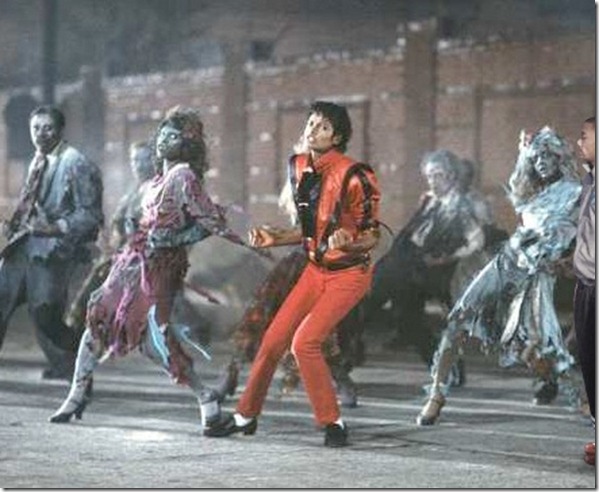

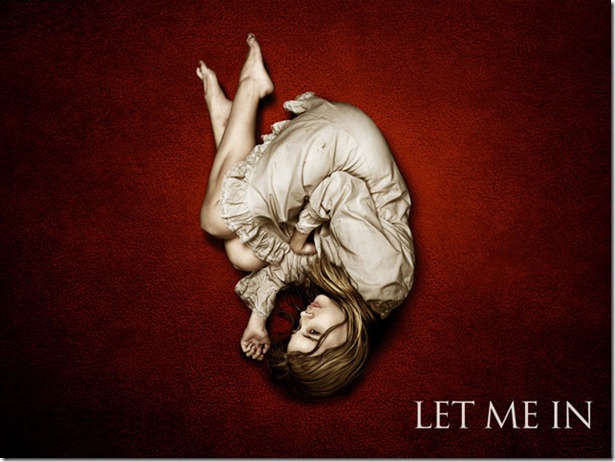























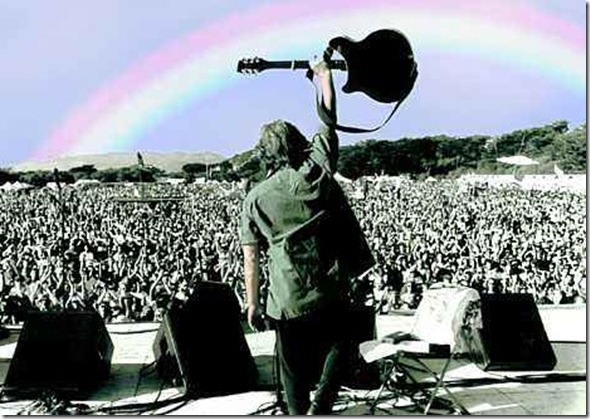





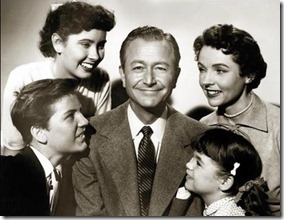
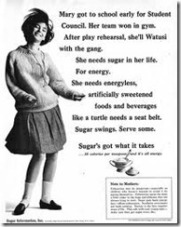








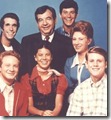






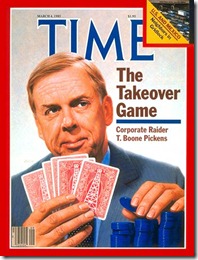






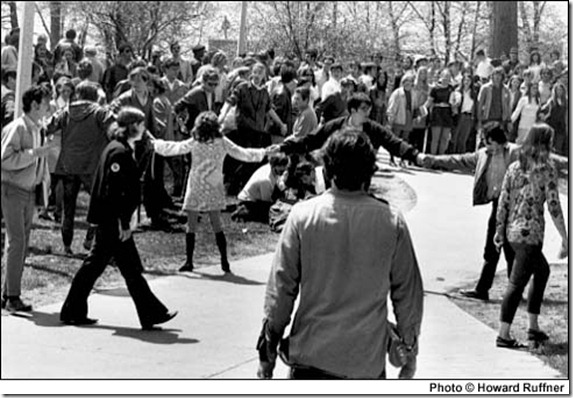
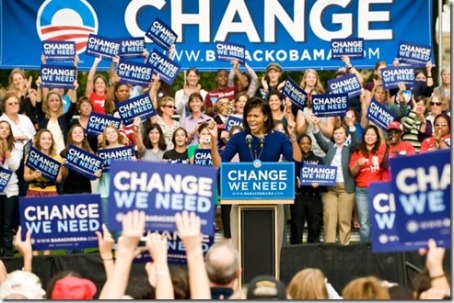
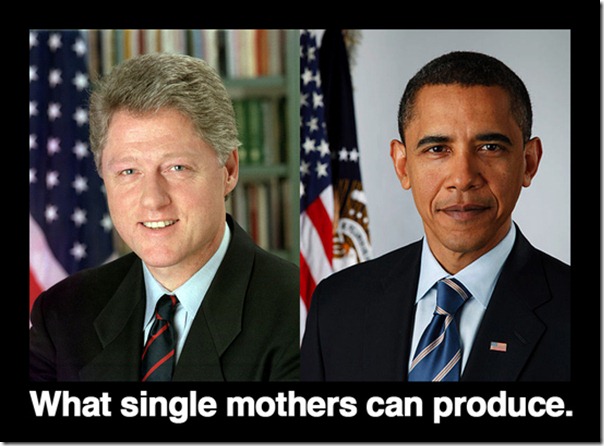













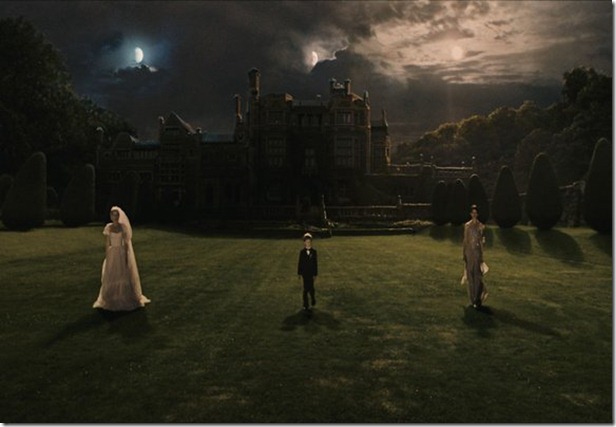










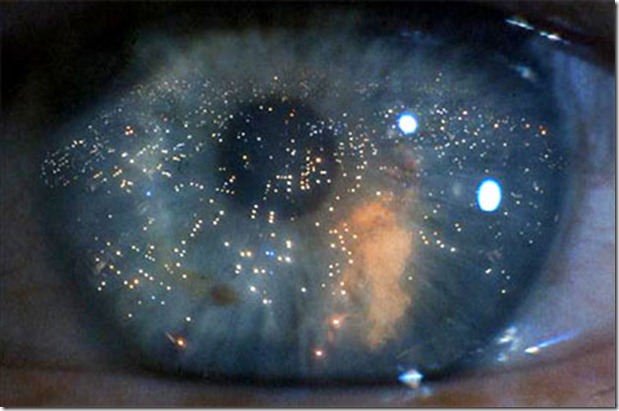






























































































 The rock groups and their lyrics themselves are often blatantly perinatal. The most obvious example of this was the group, Nirvana, who came out with a CD titled “In Utero.” The fact that the leader of the group, Kurt Cobain, committed suicide is a strong indication of his closeness and access to his perinatal trauma…as I will soon explain.
The rock groups and their lyrics themselves are often blatantly perinatal. The most obvious example of this was the group, Nirvana, who came out with a CD titled “In Utero.” The fact that the leader of the group, Kurt Cobain, committed suicide is a strong indication of his closeness and access to his perinatal trauma…as I will soon explain. 
























































